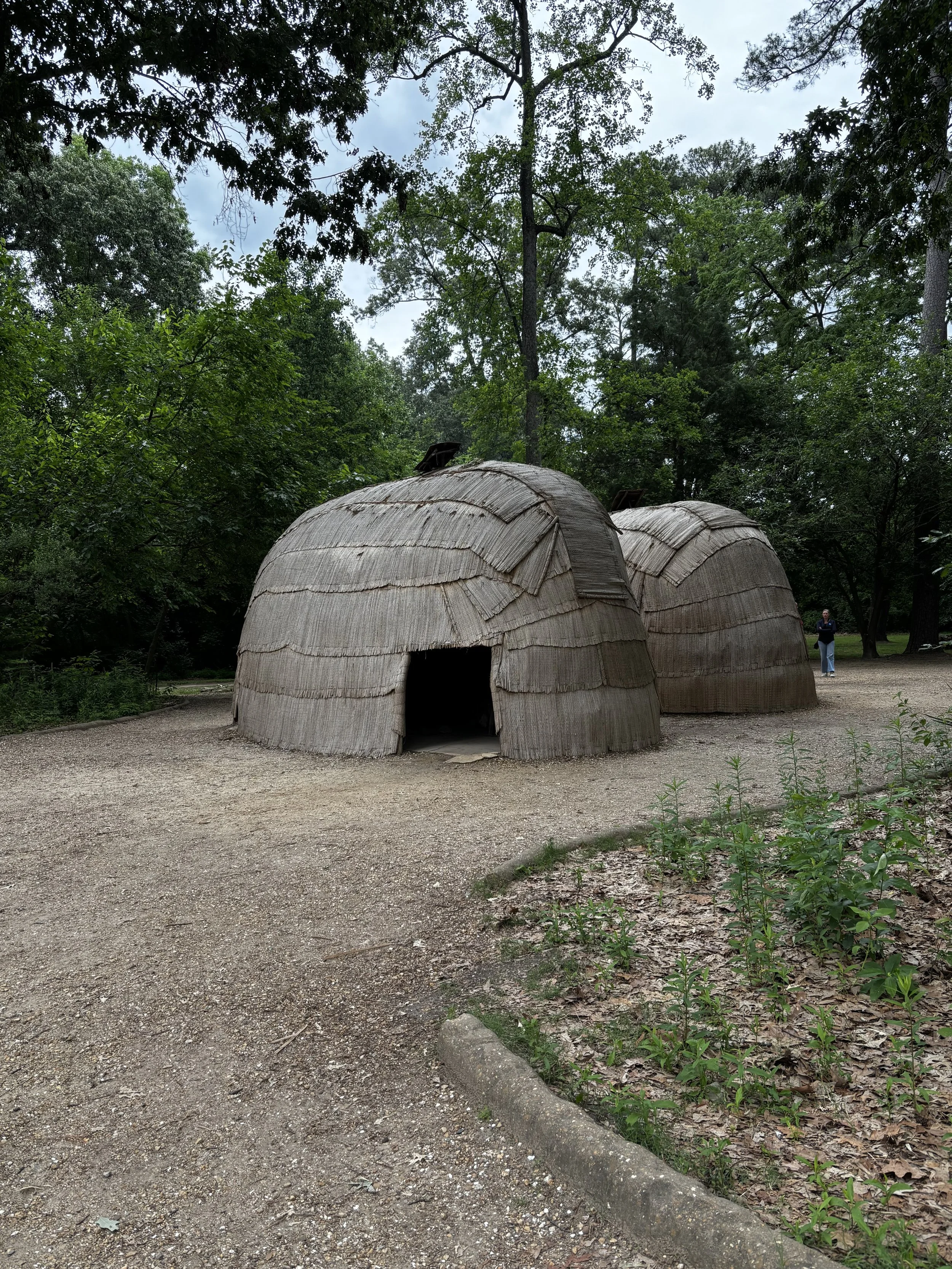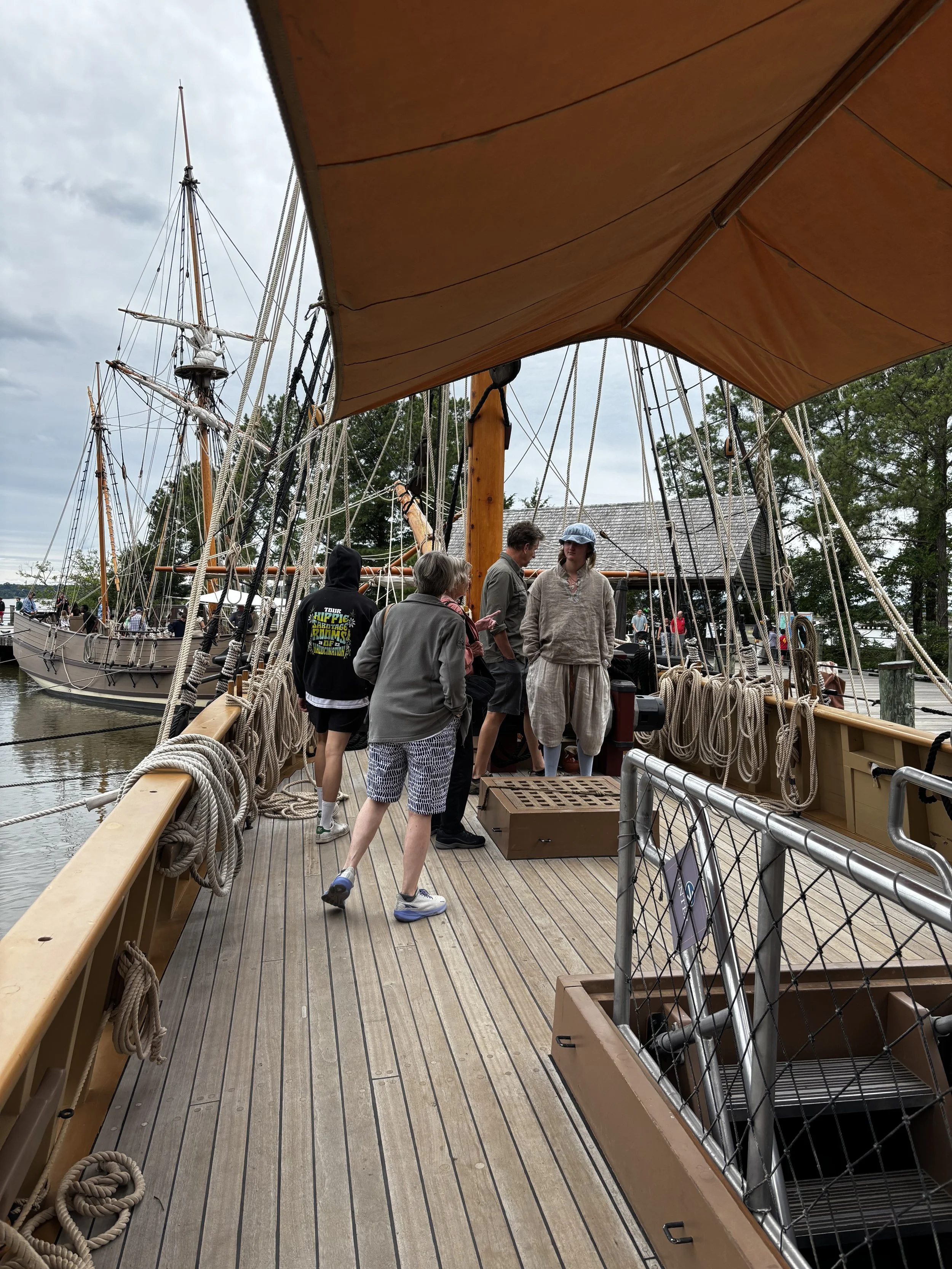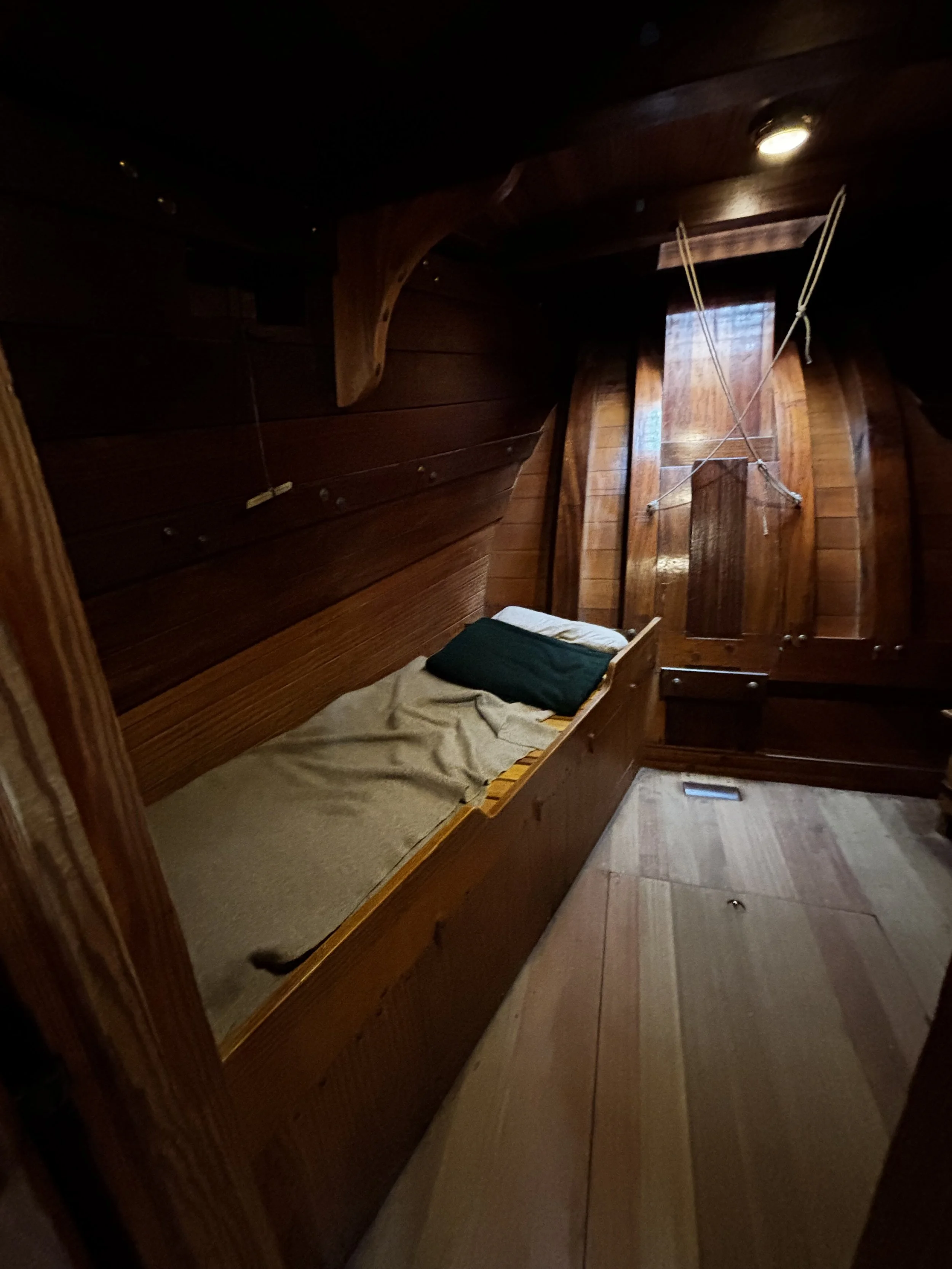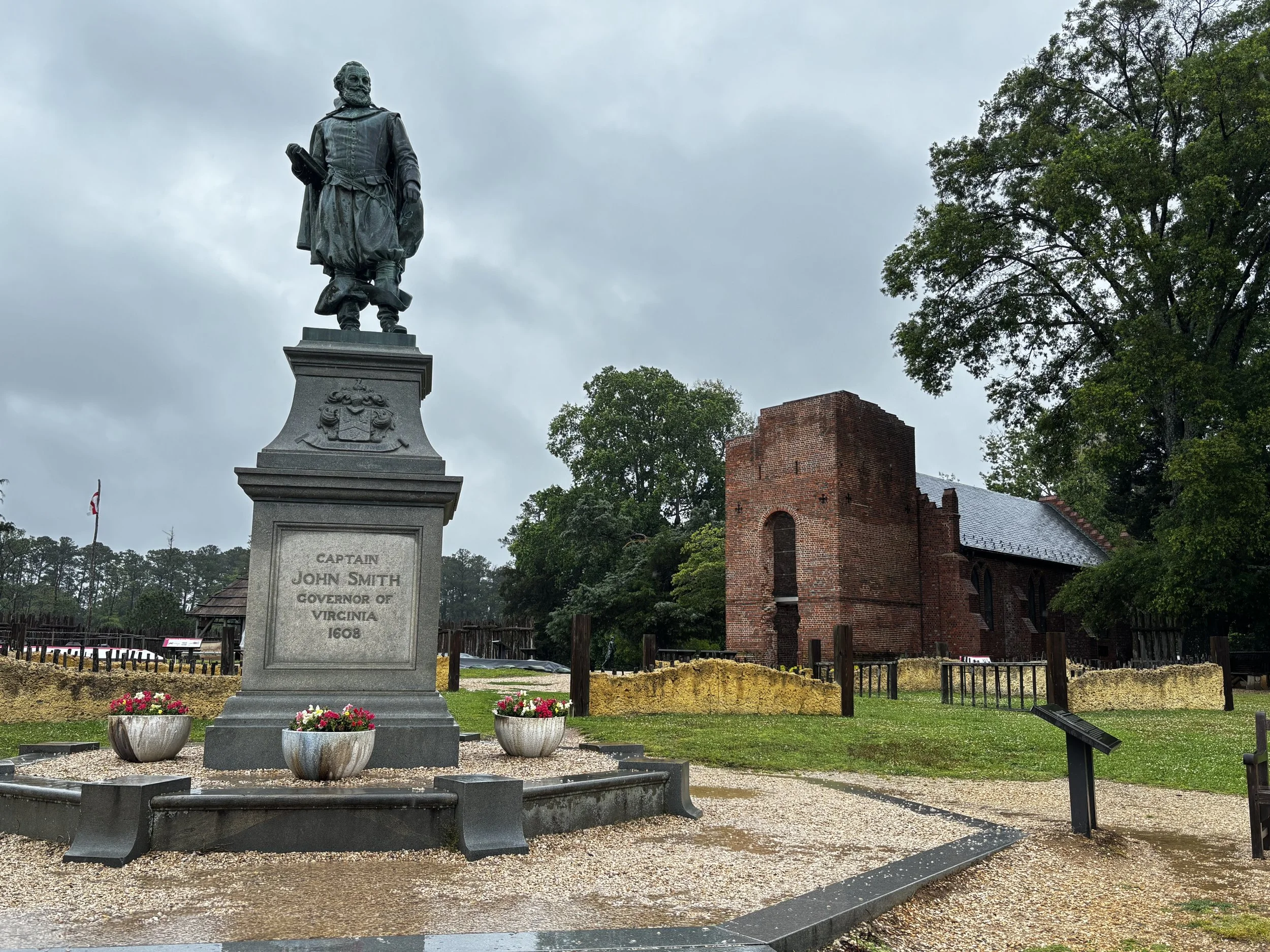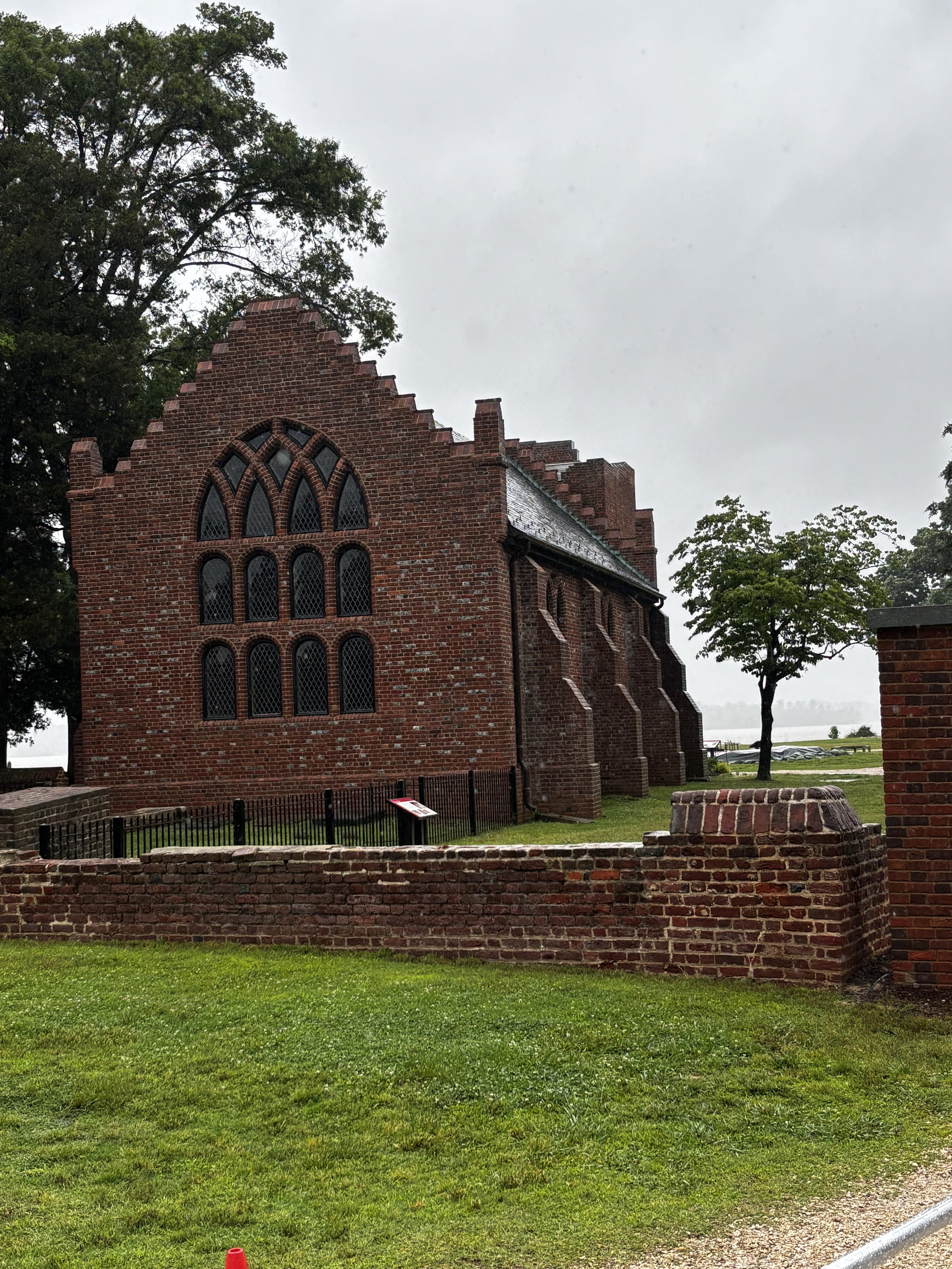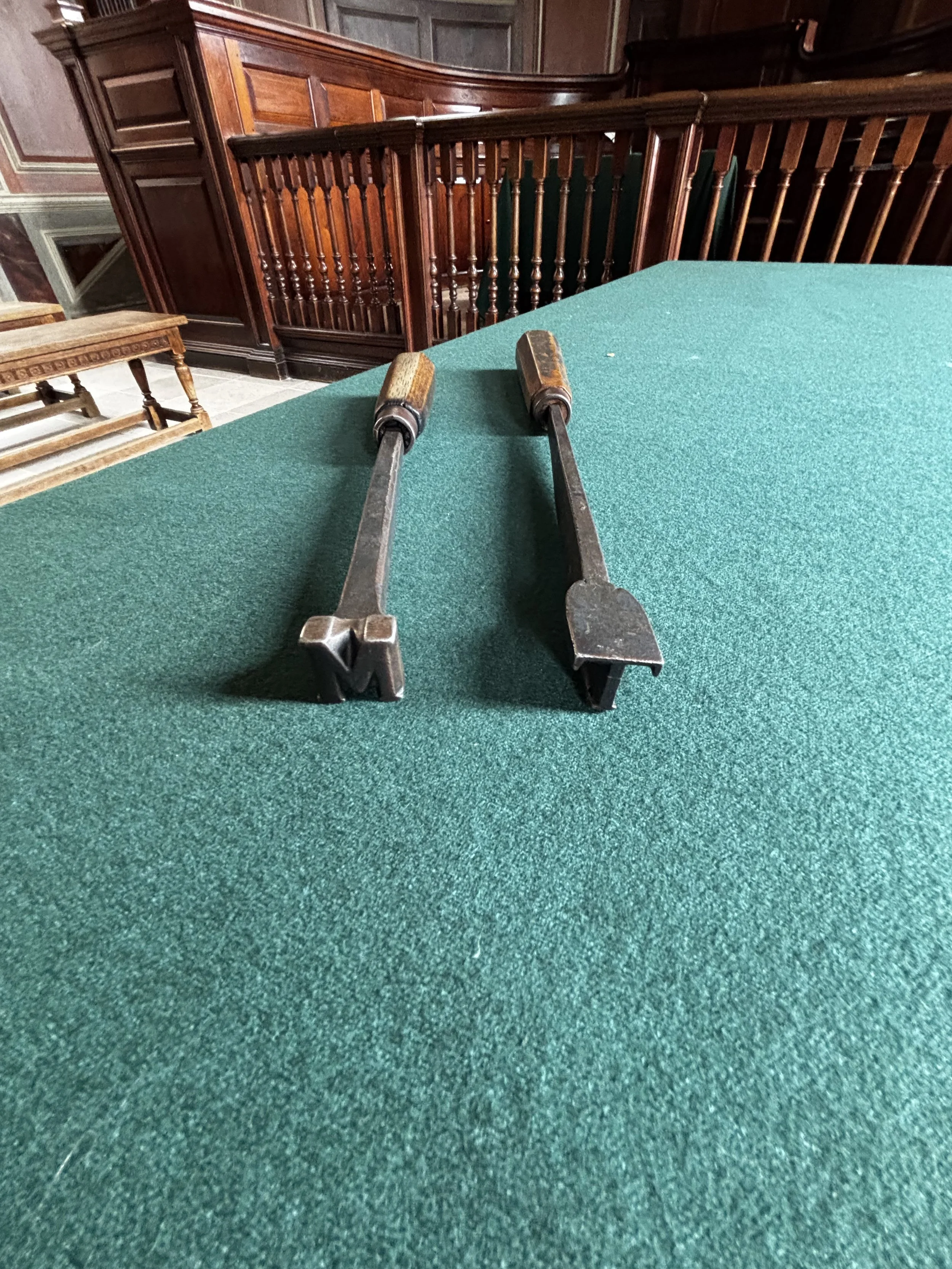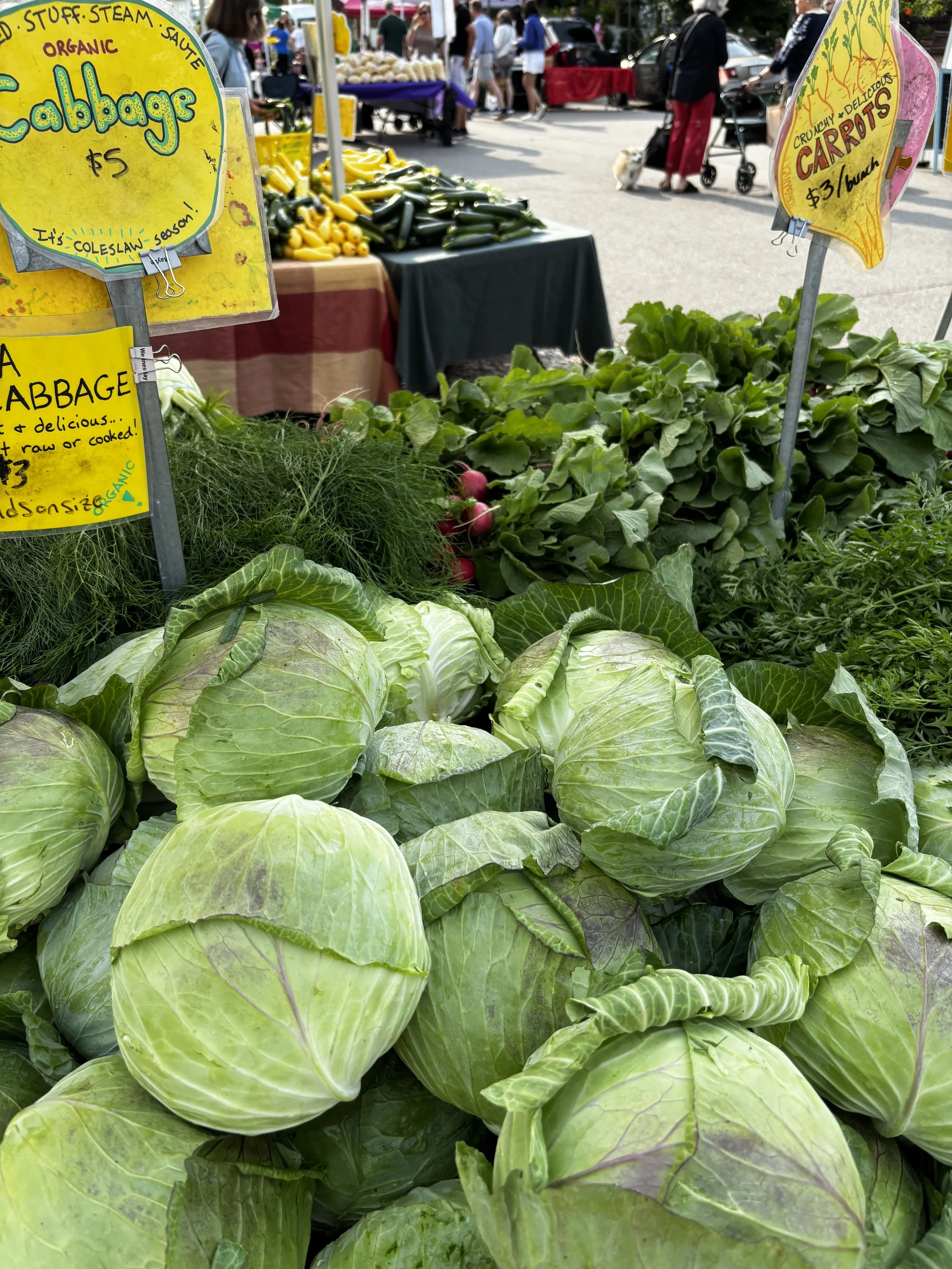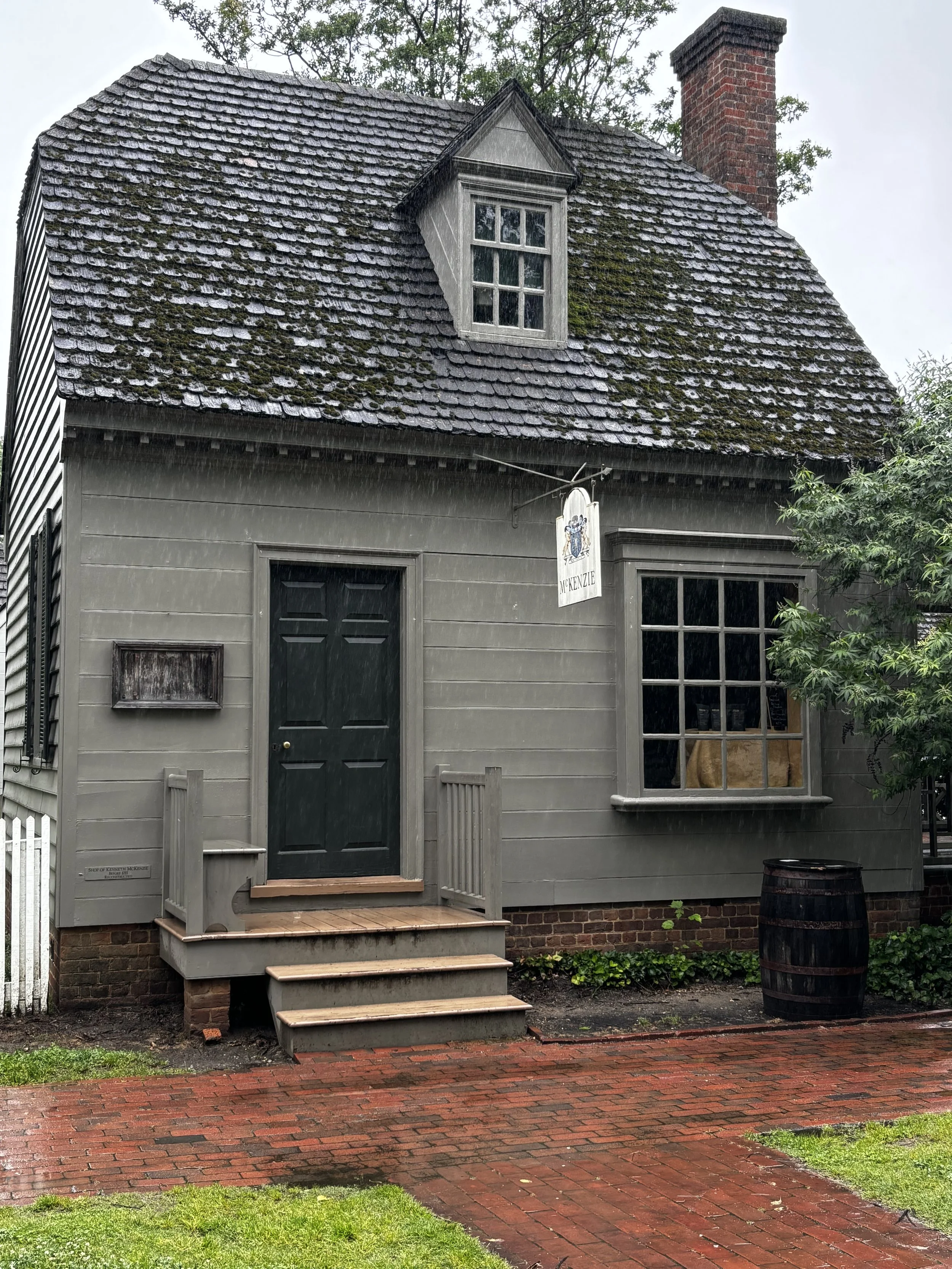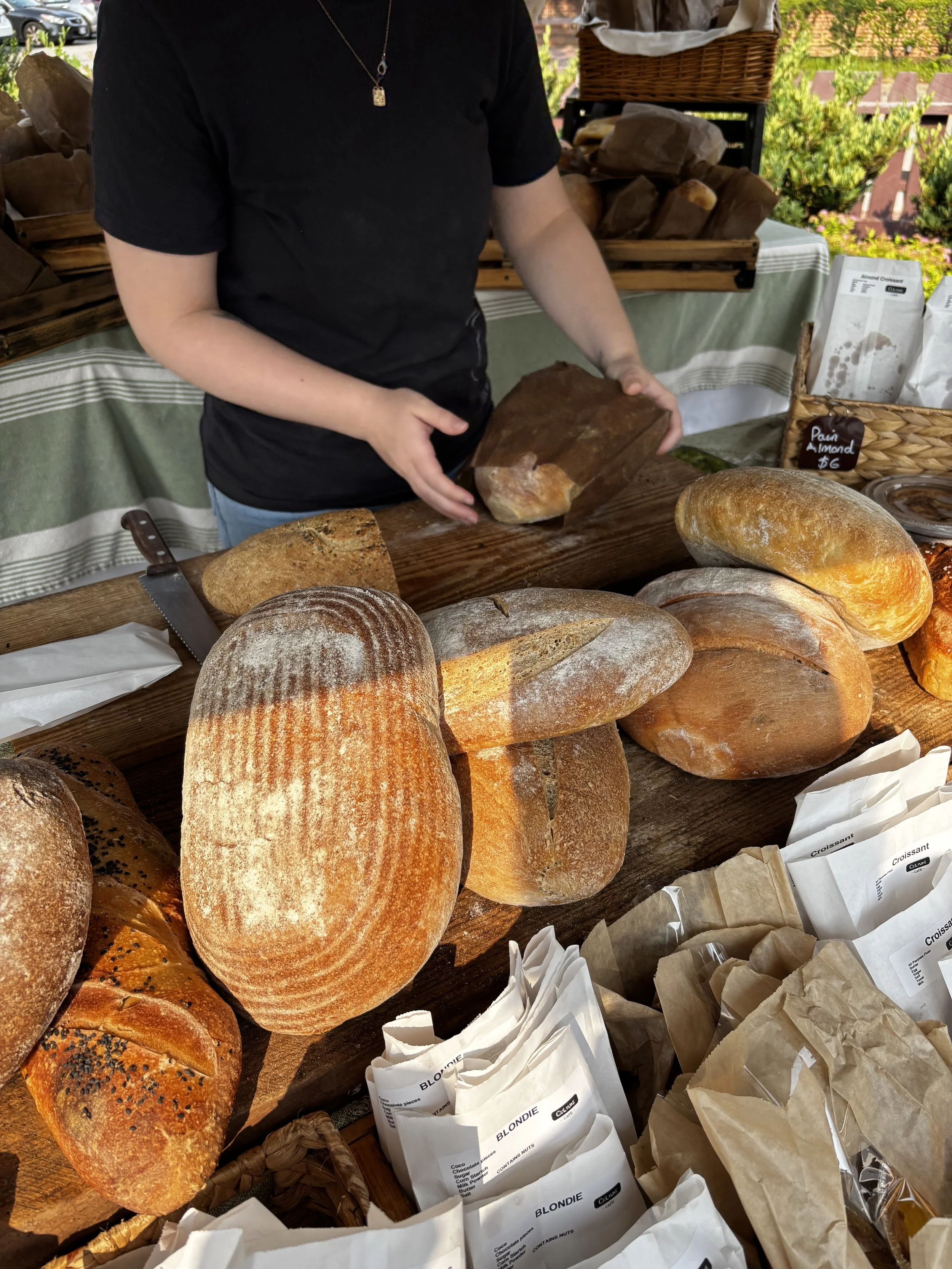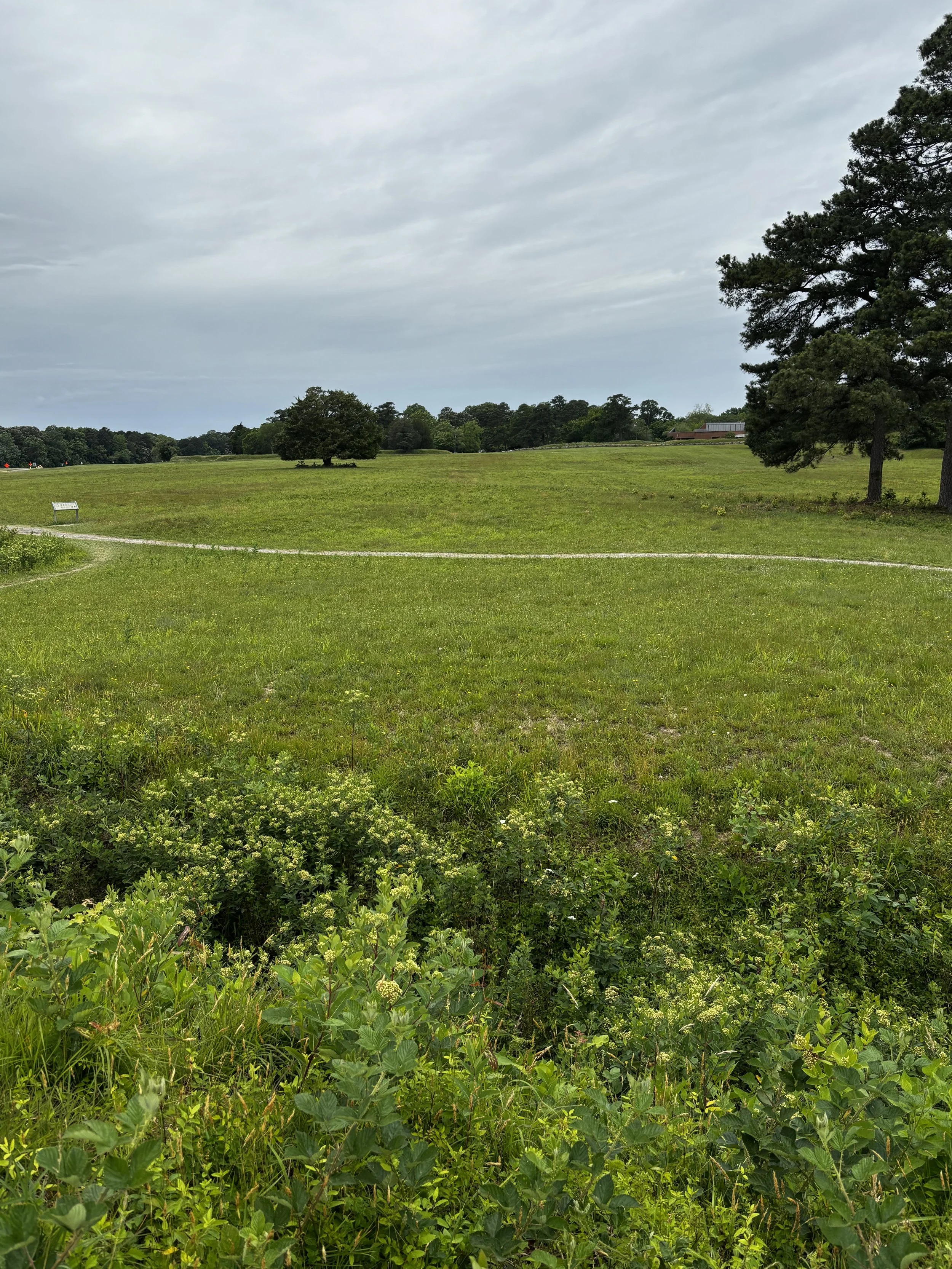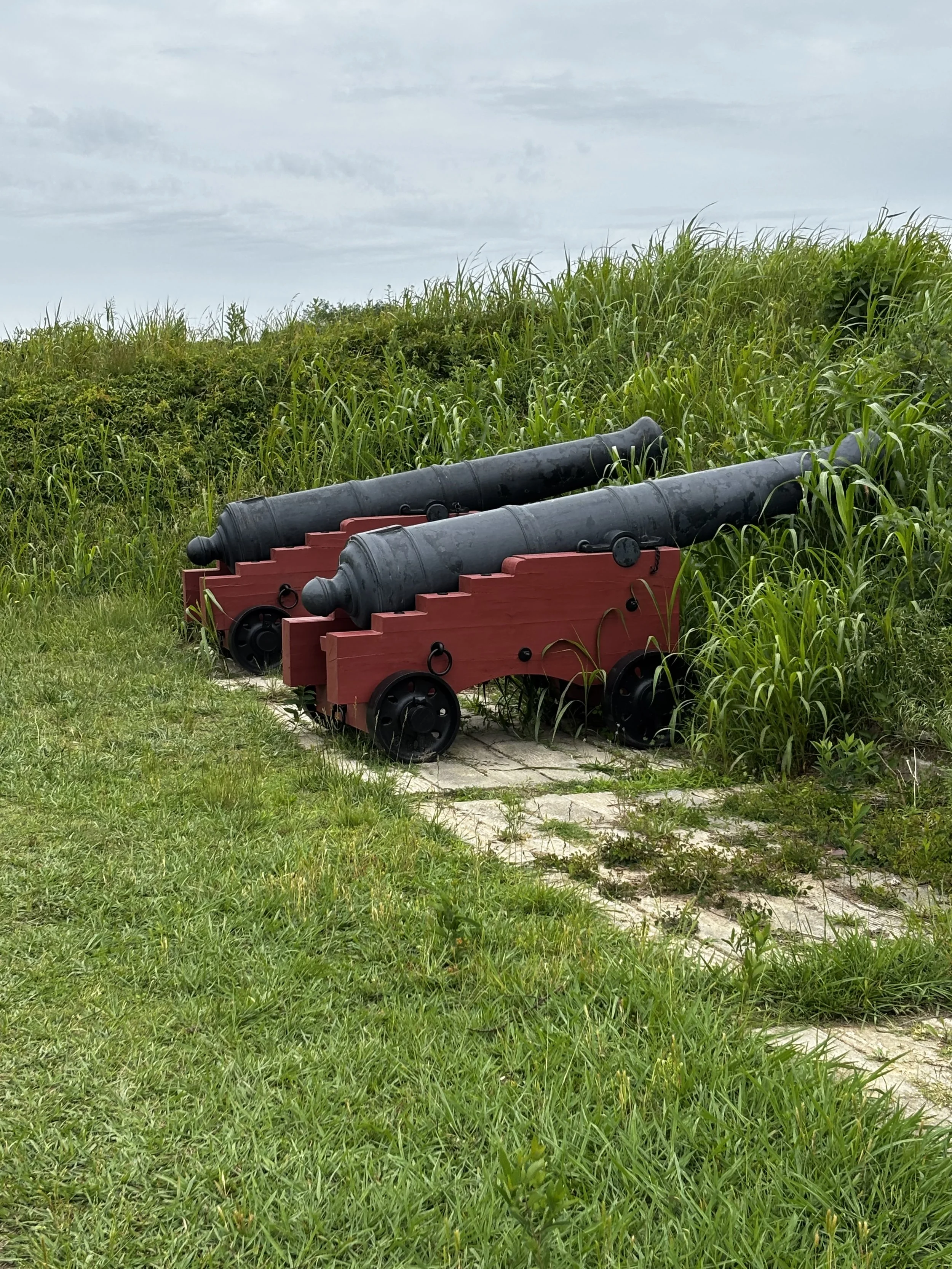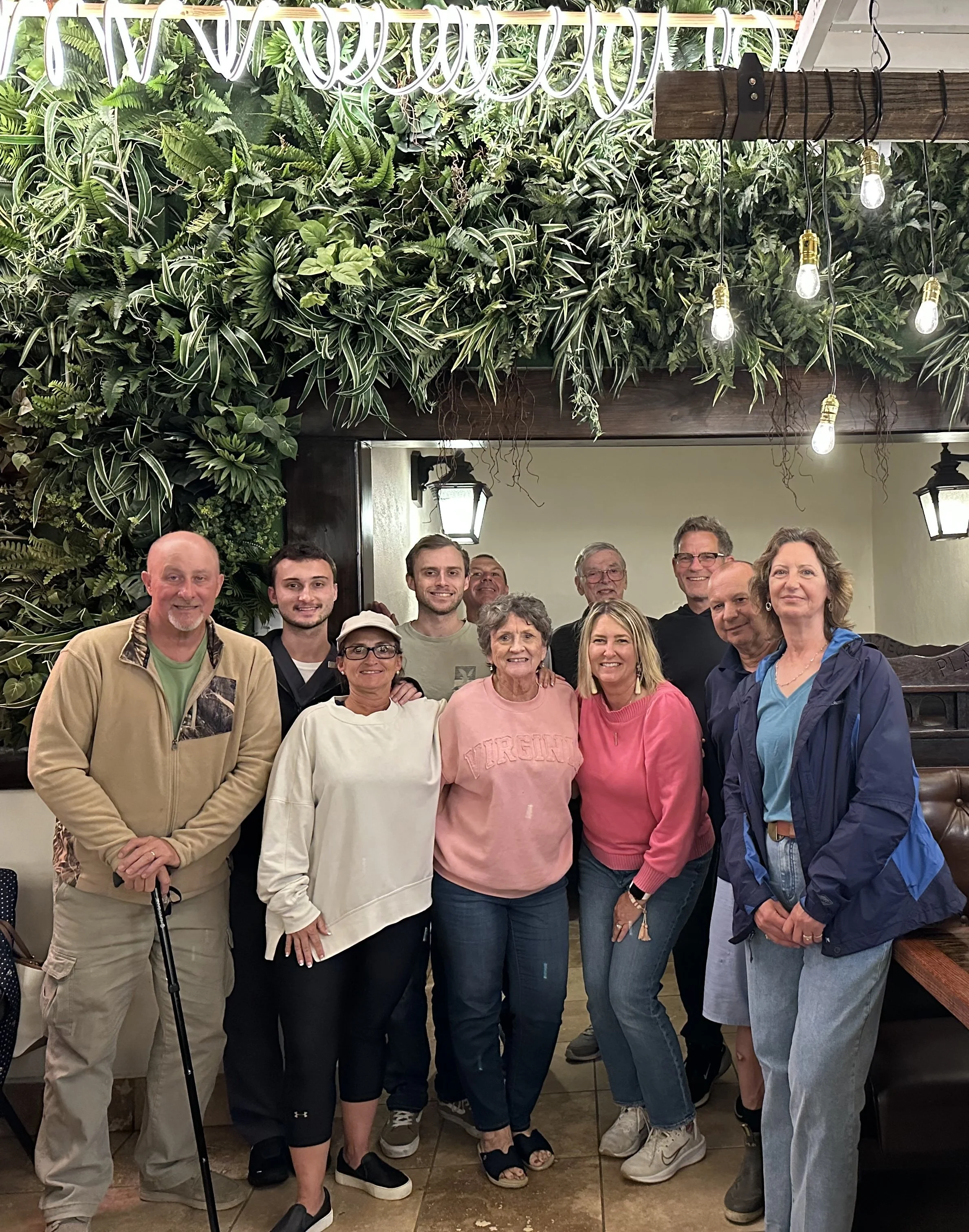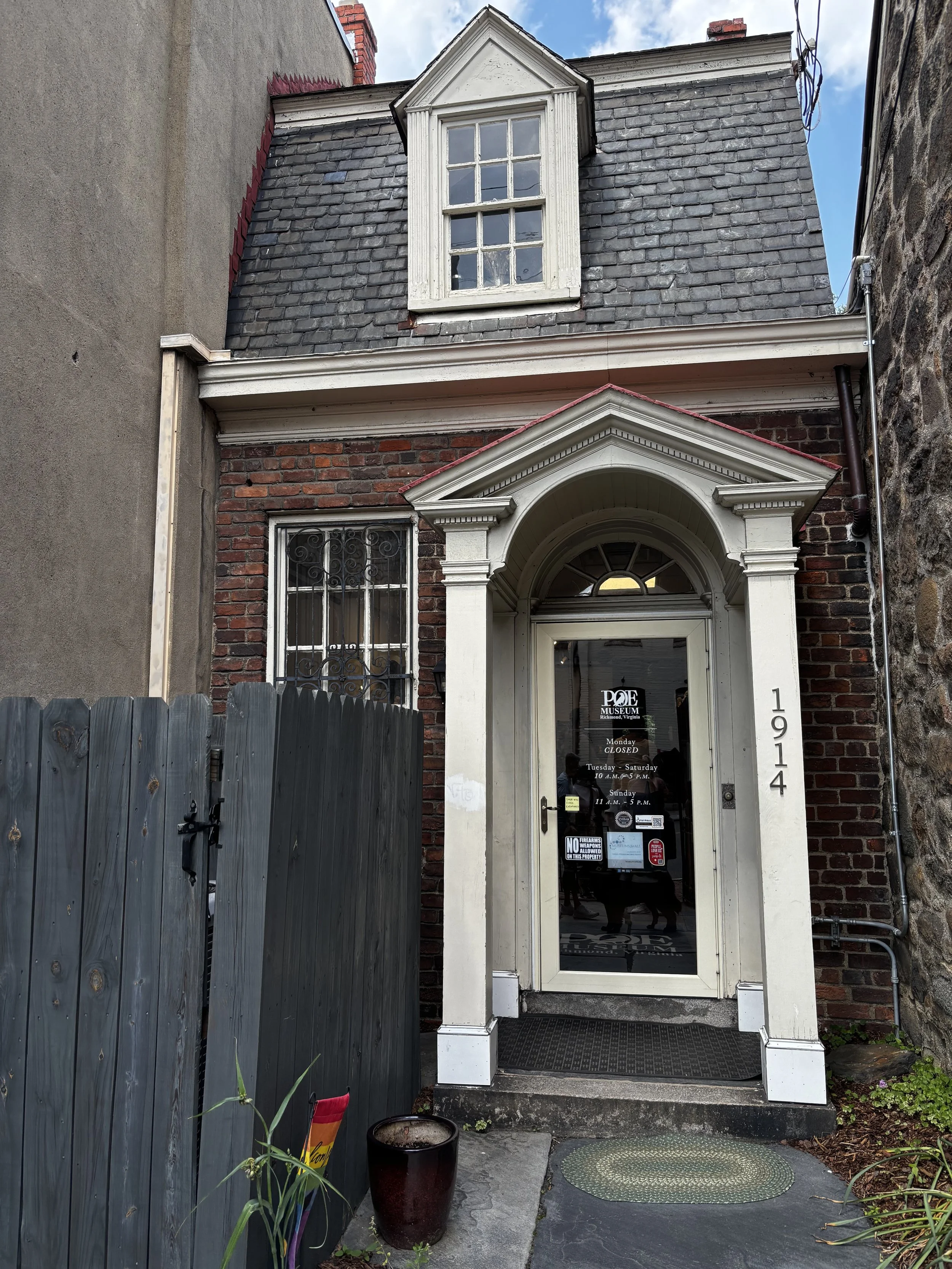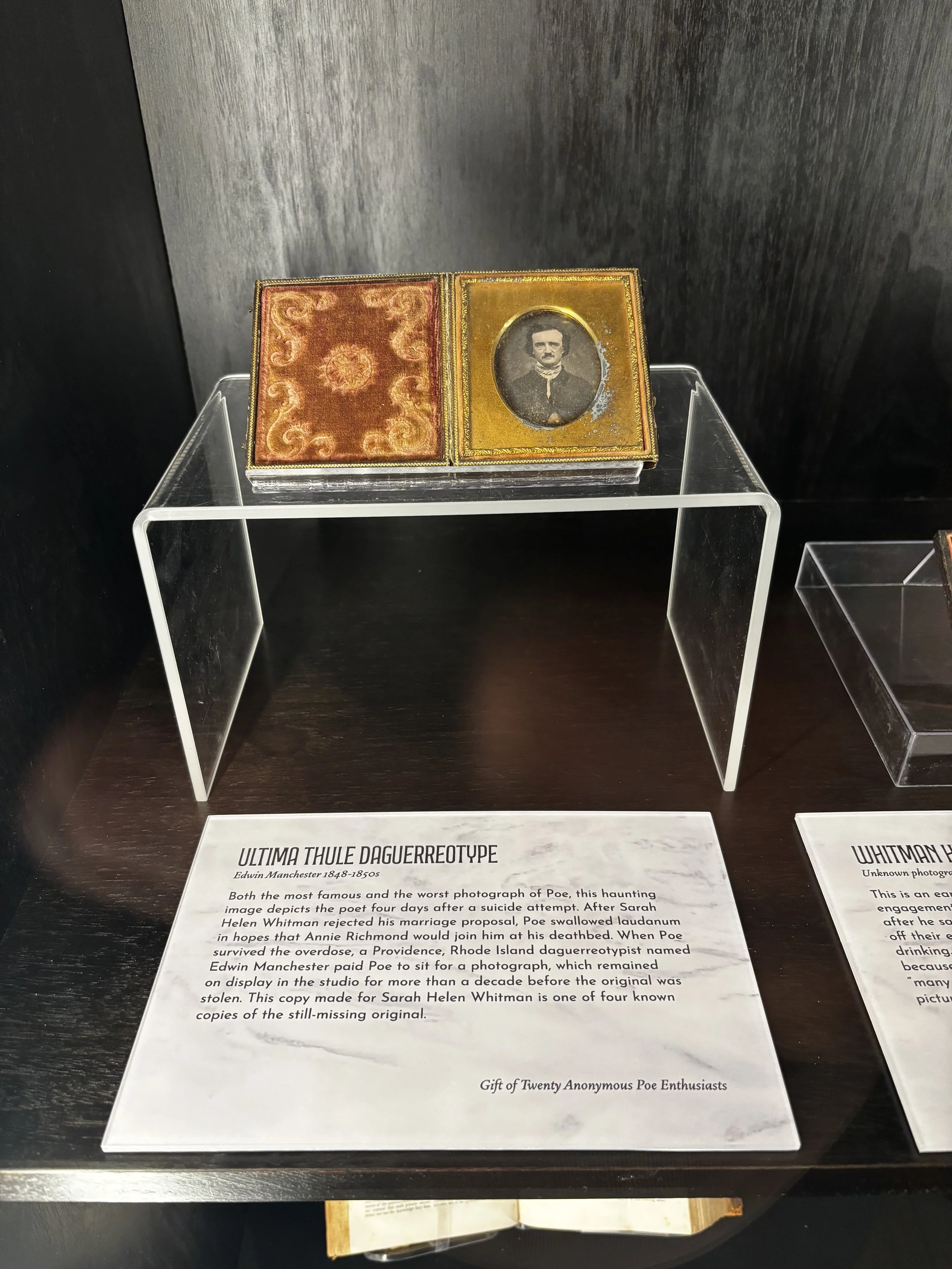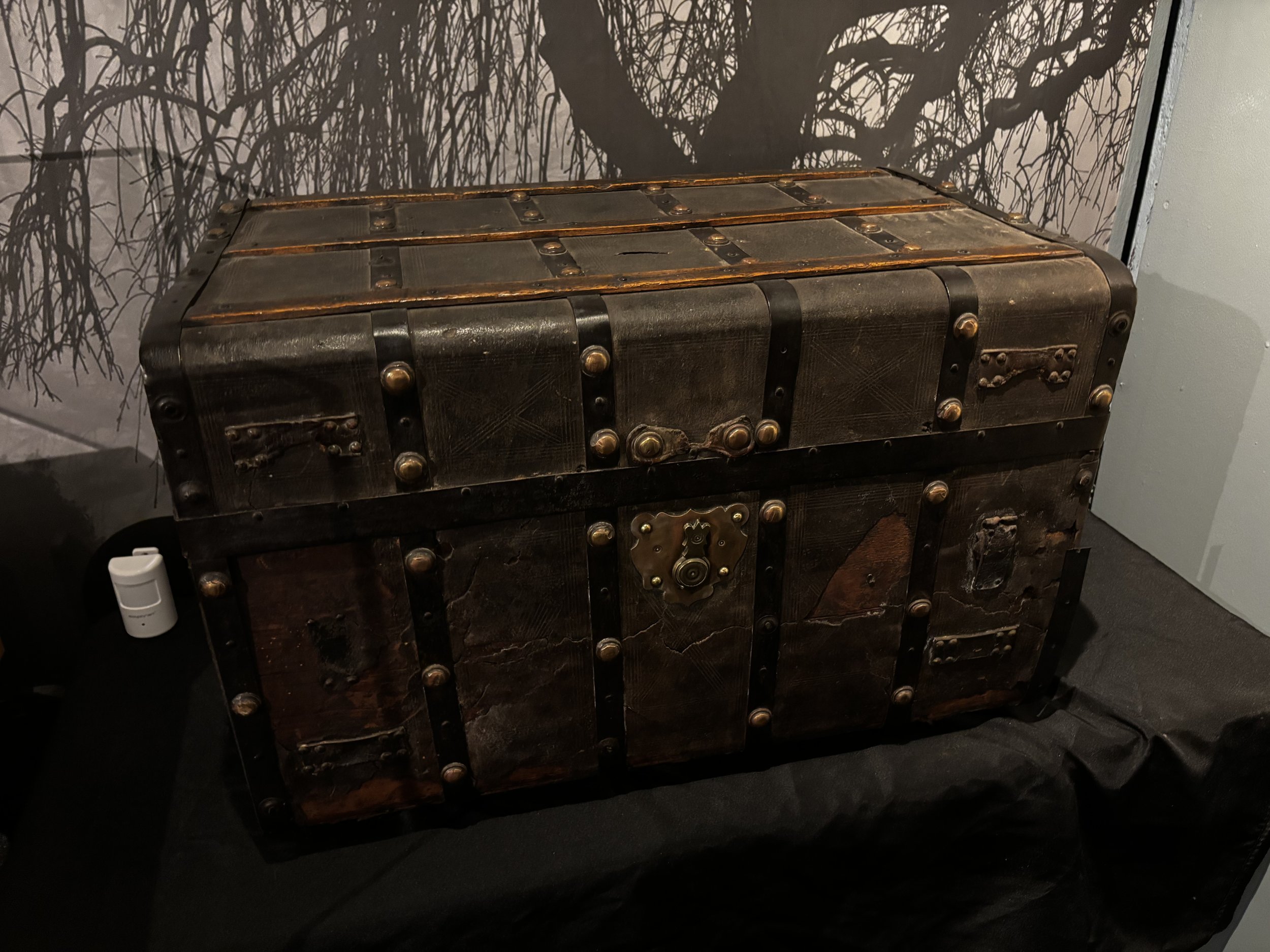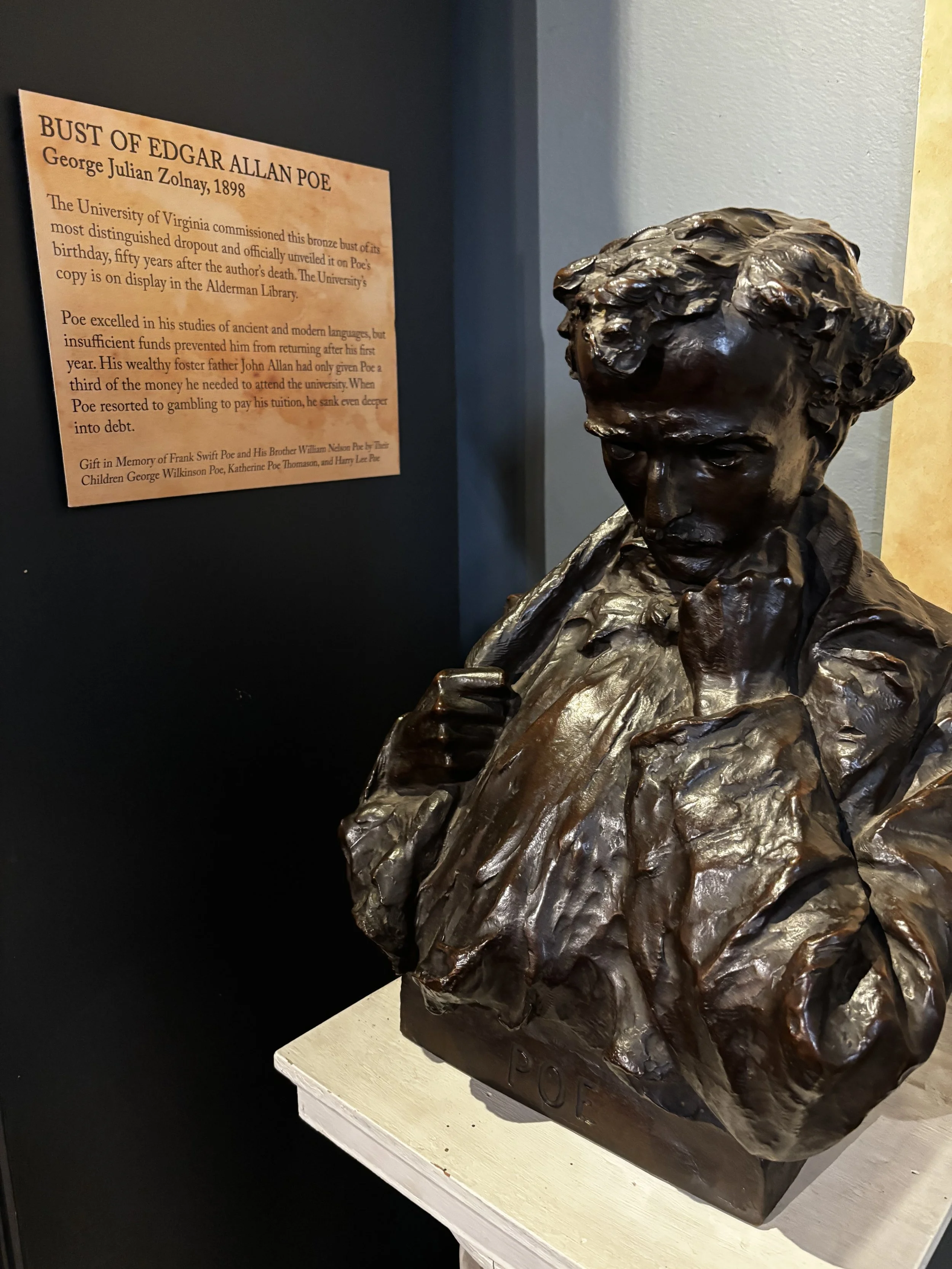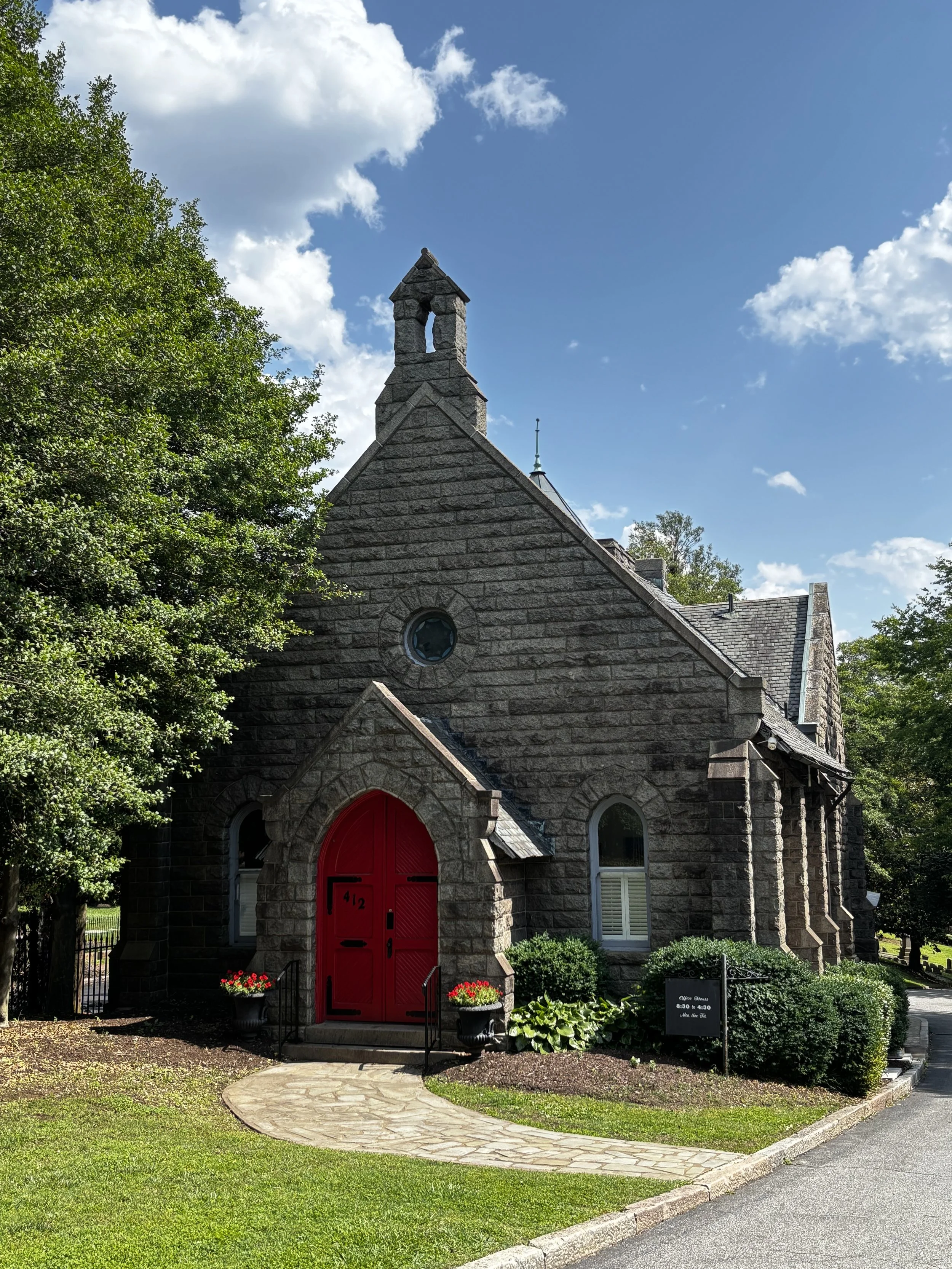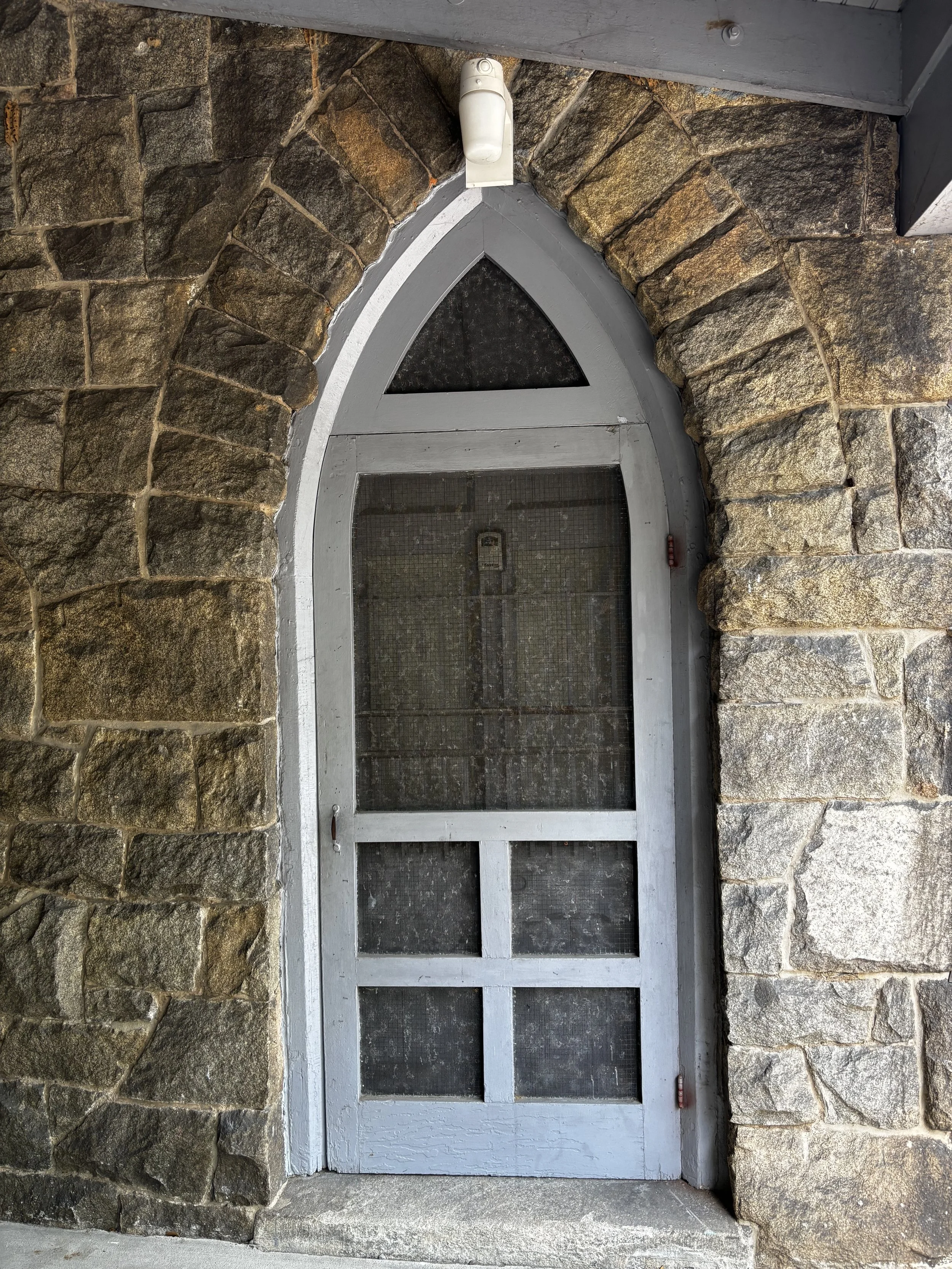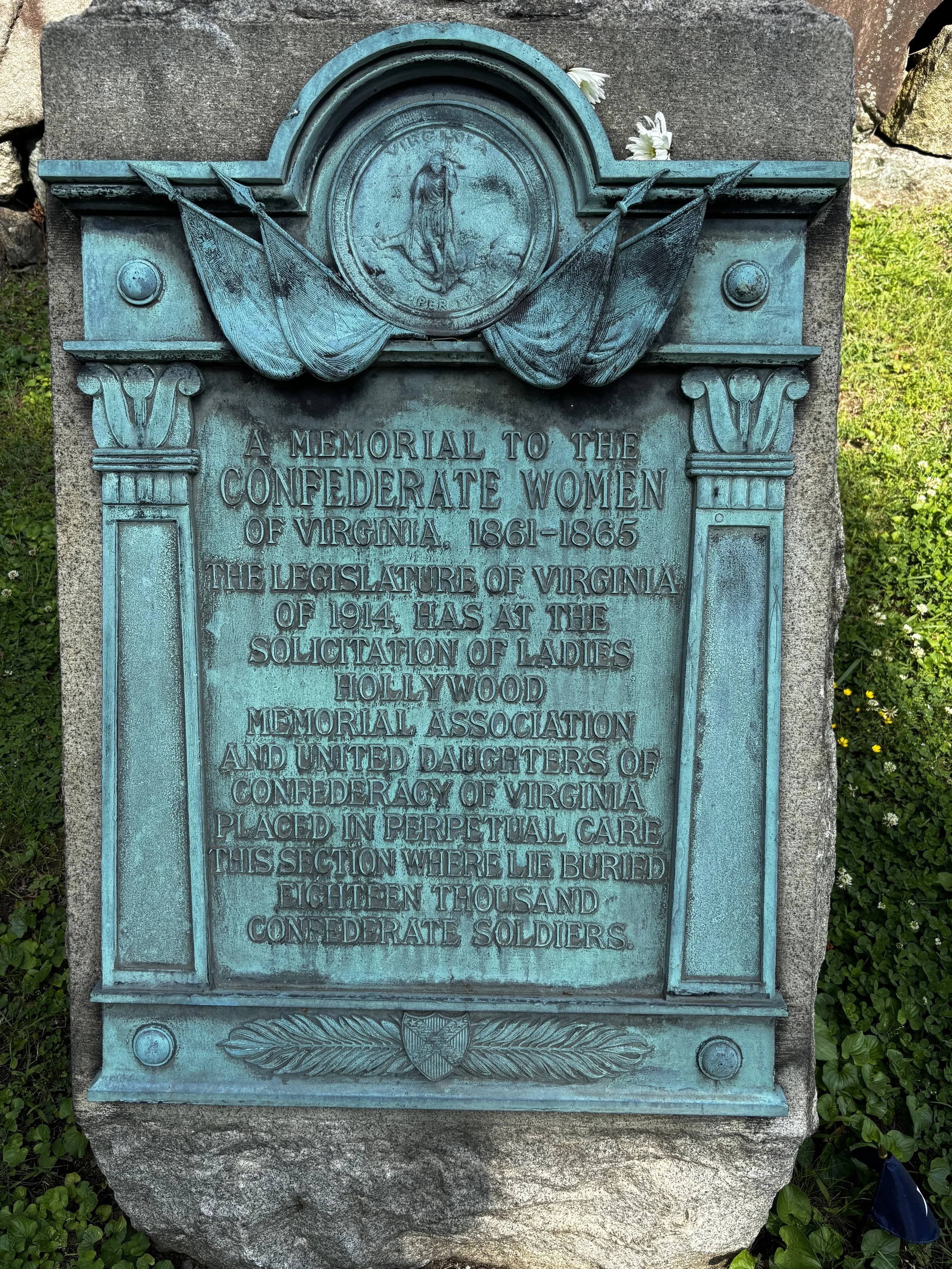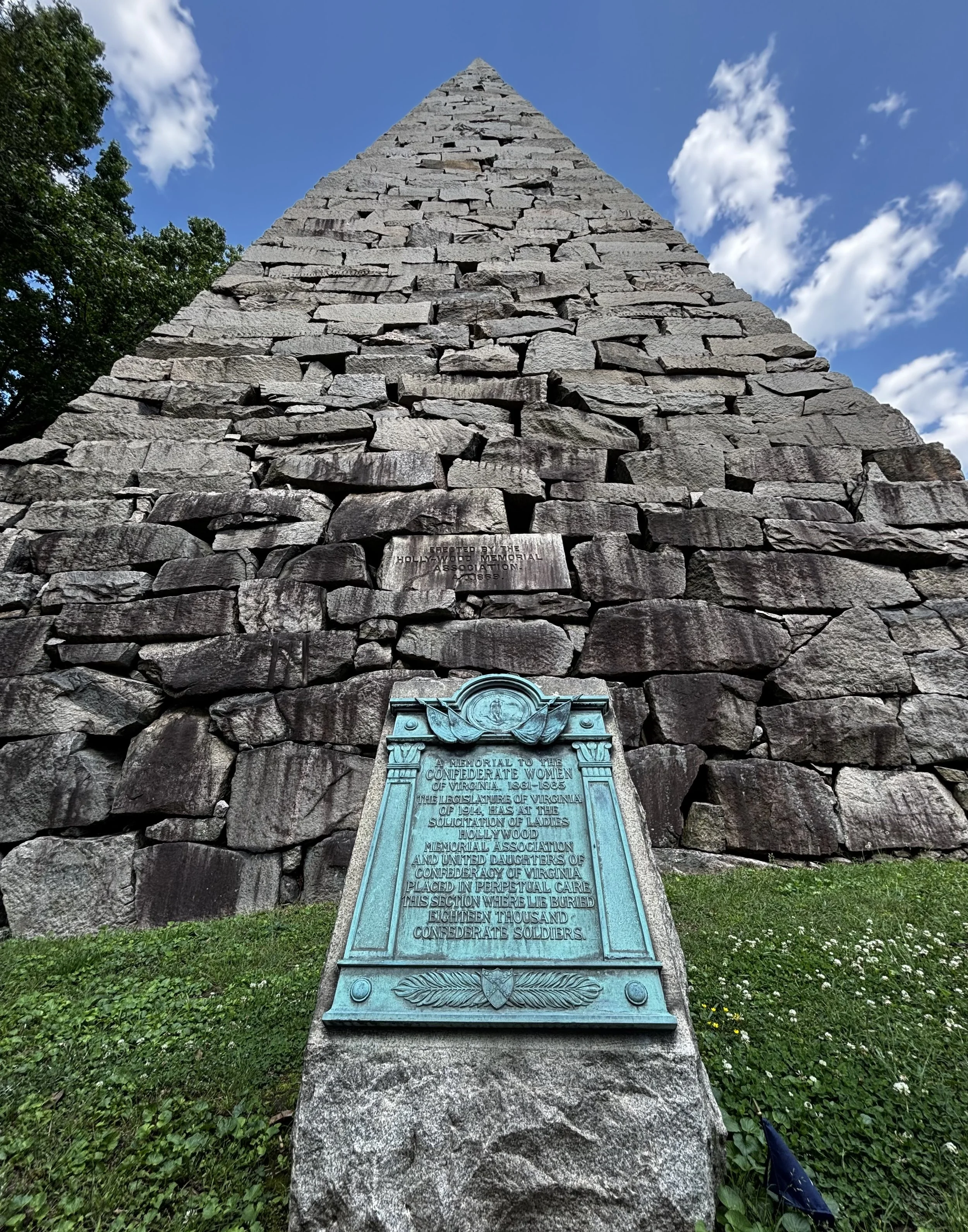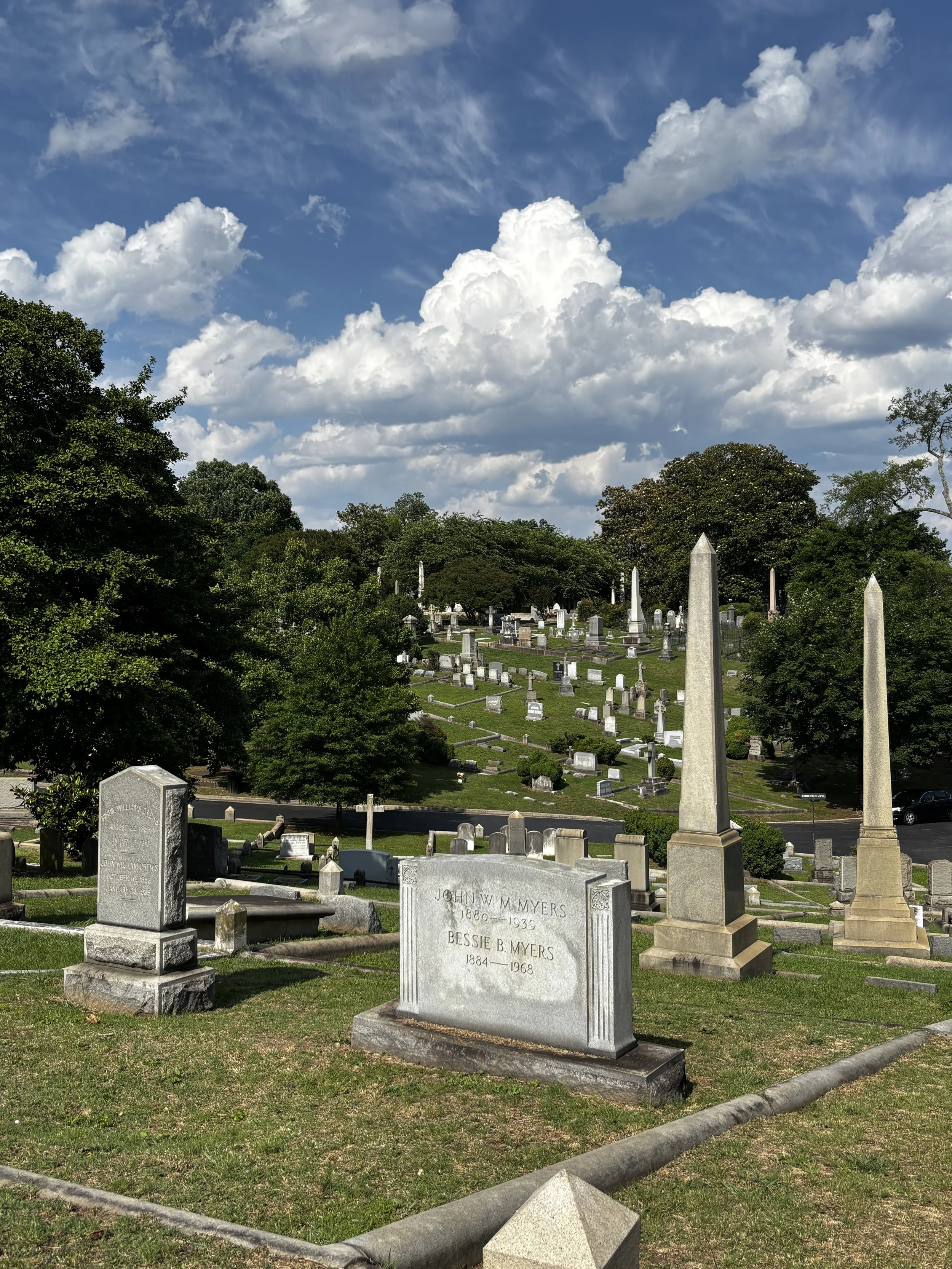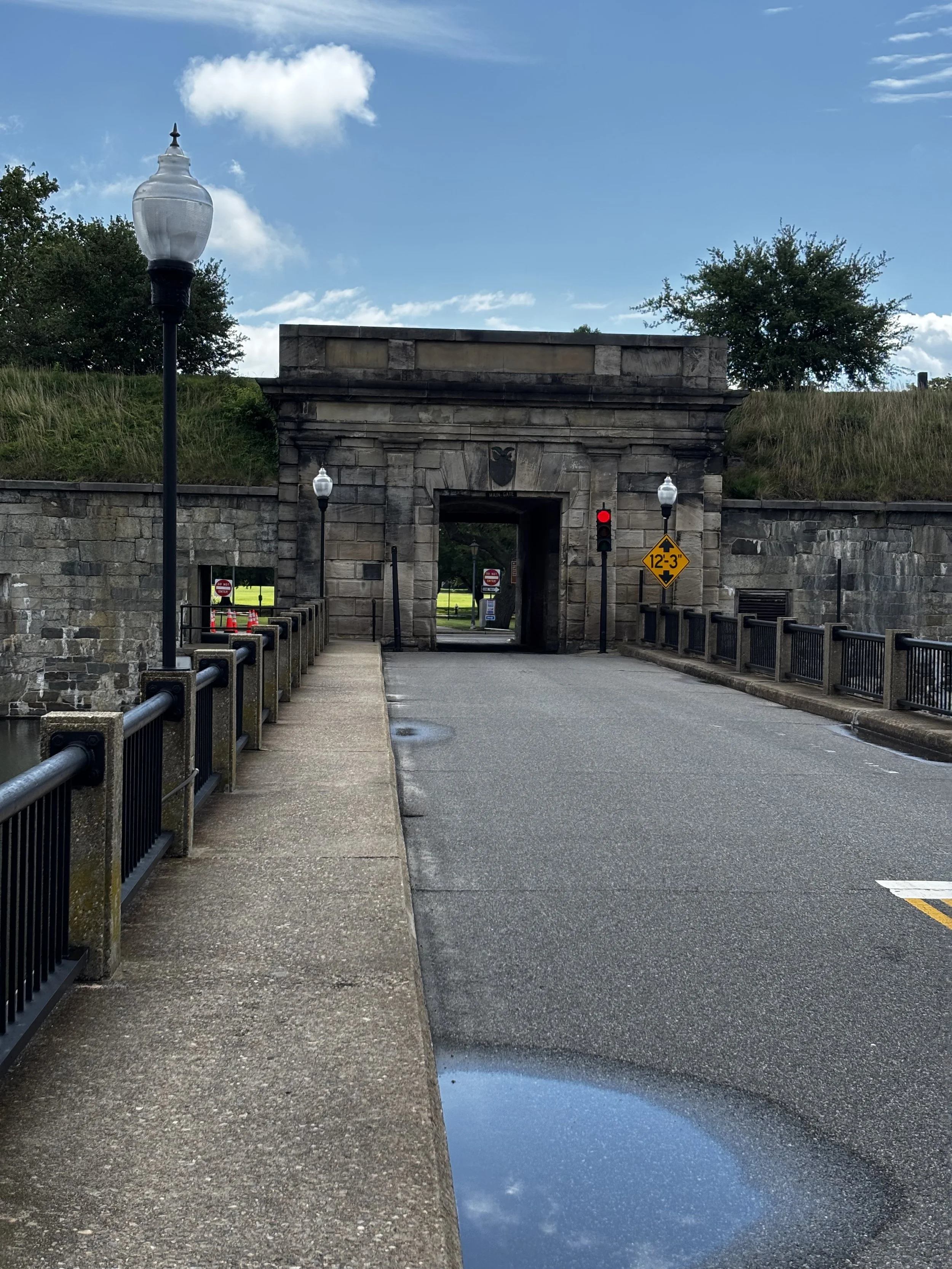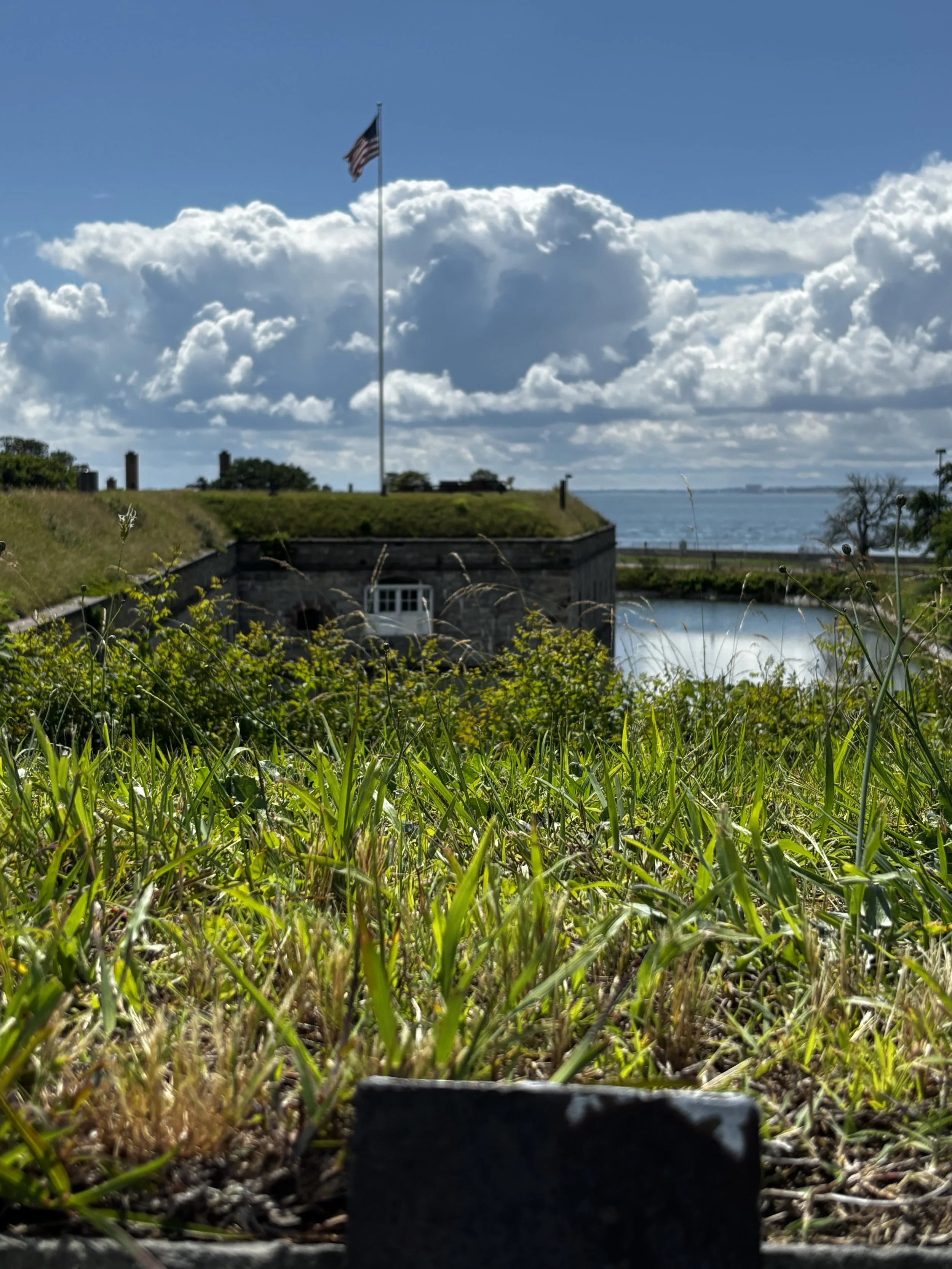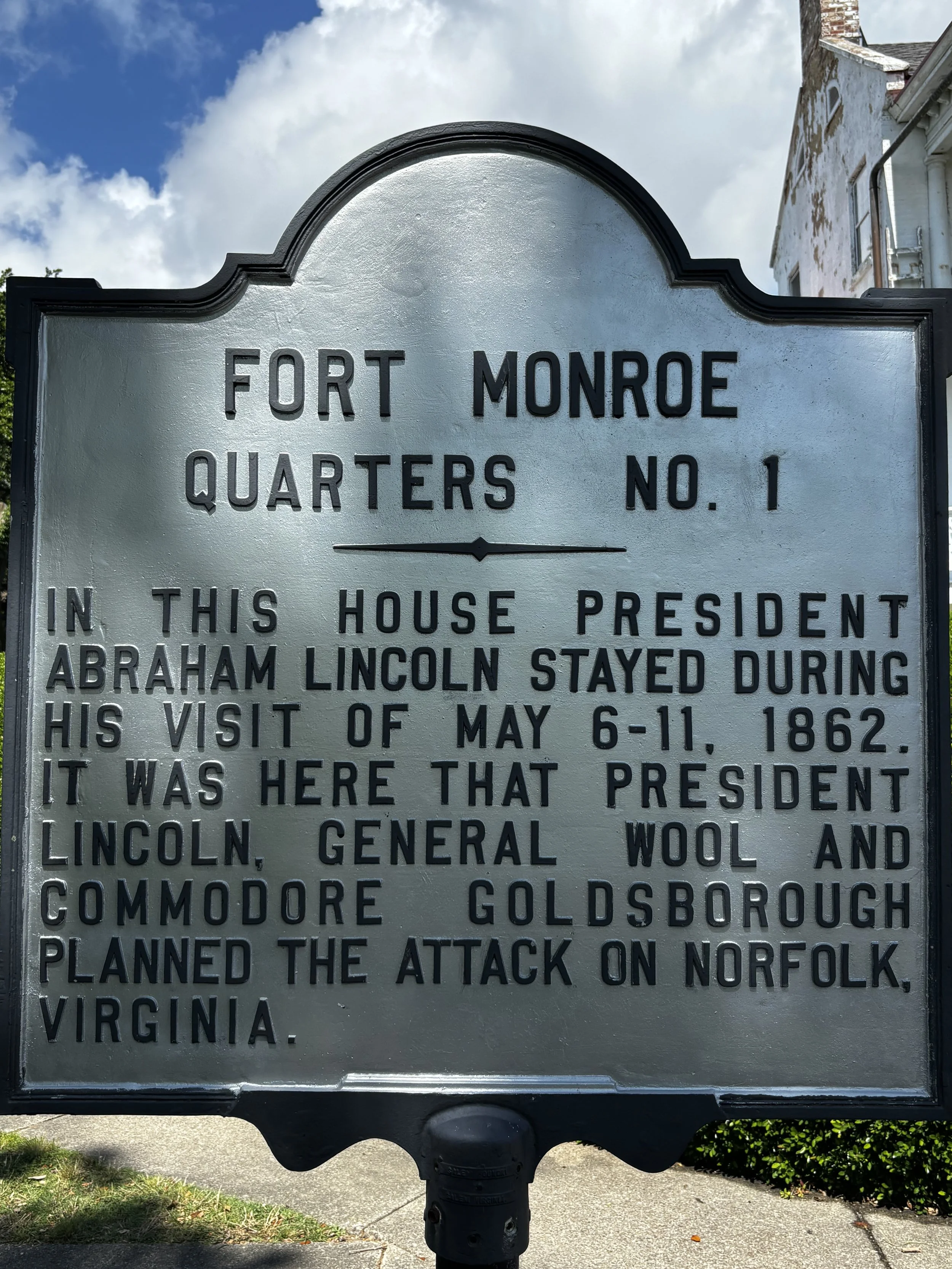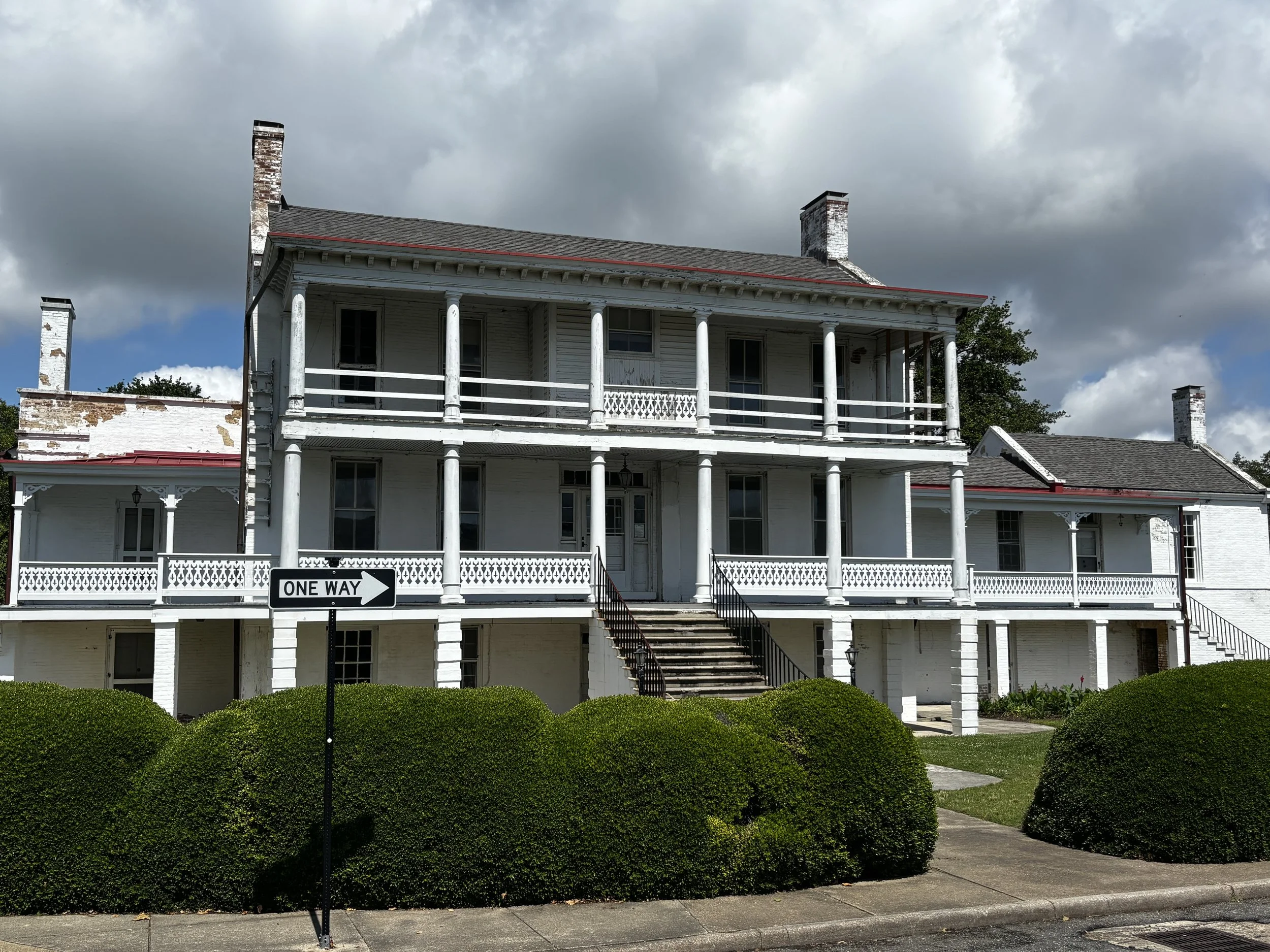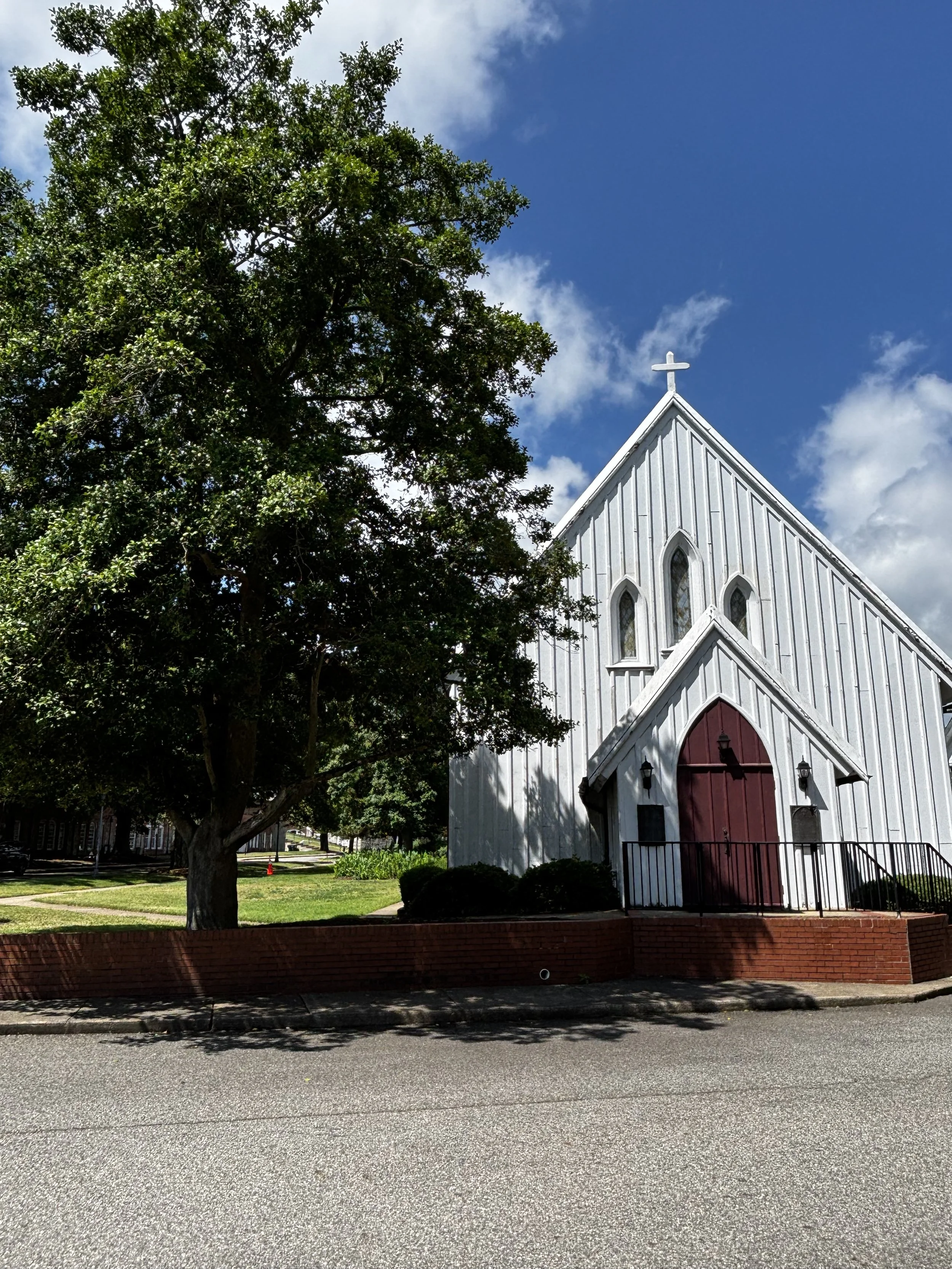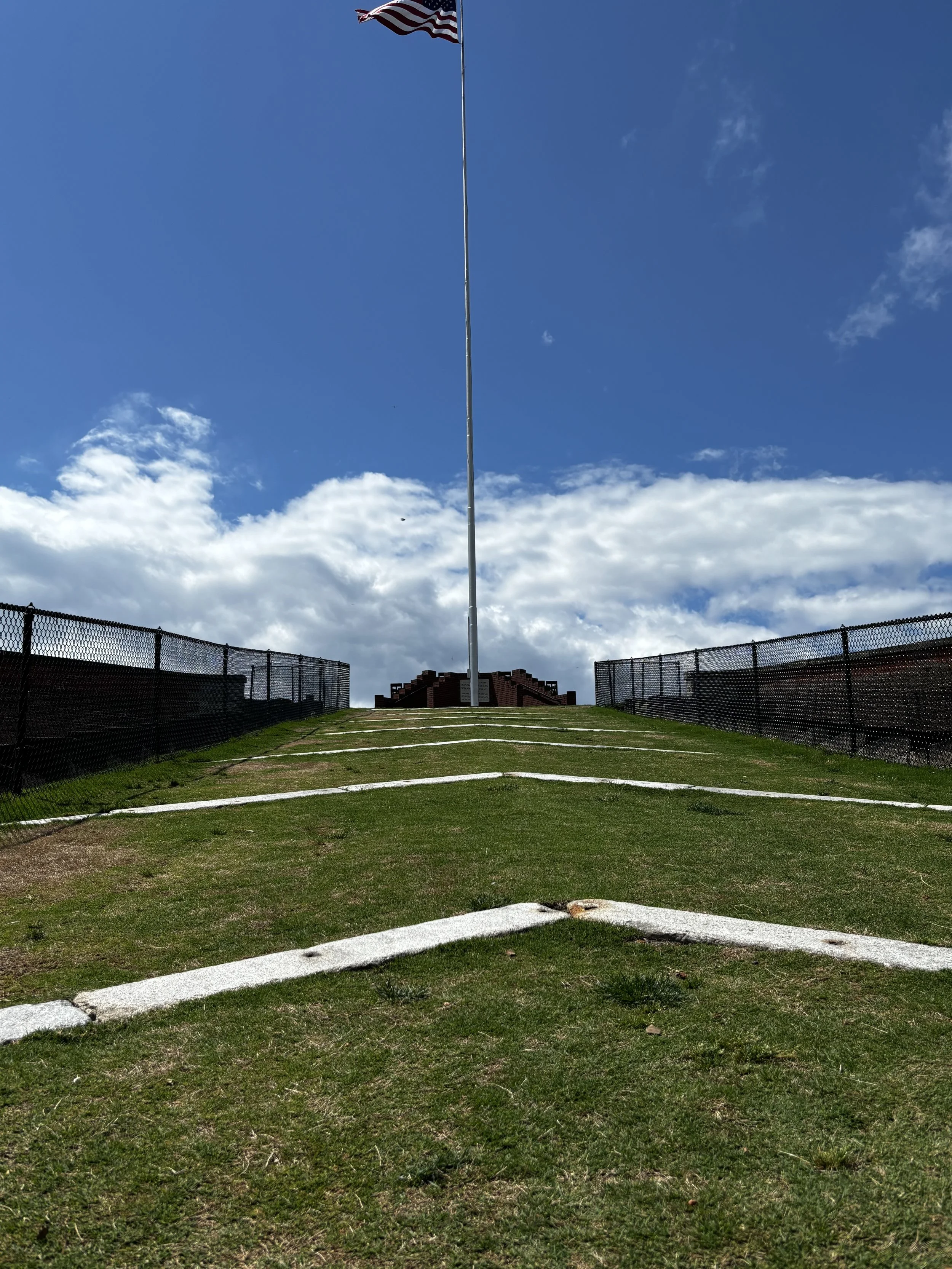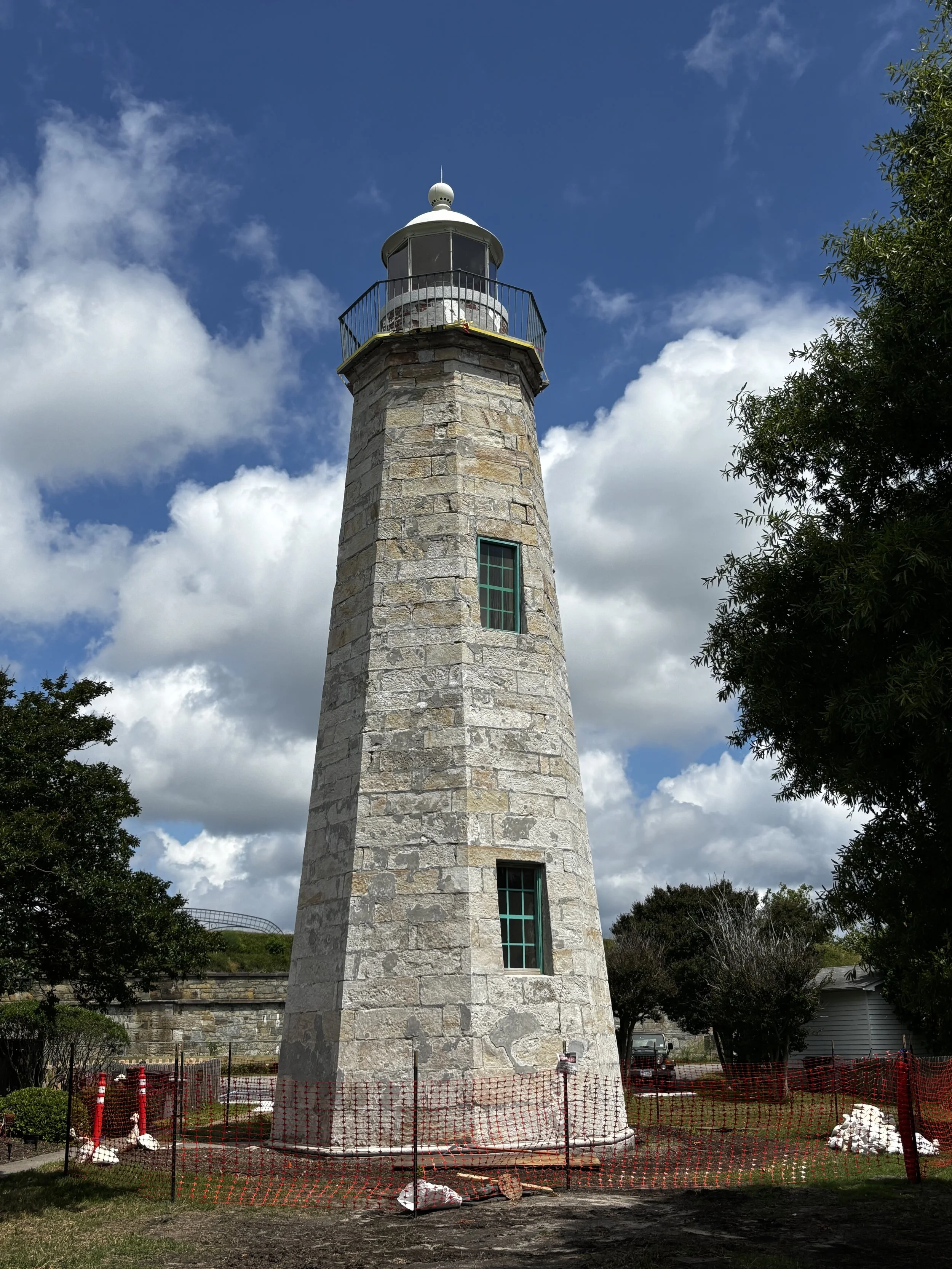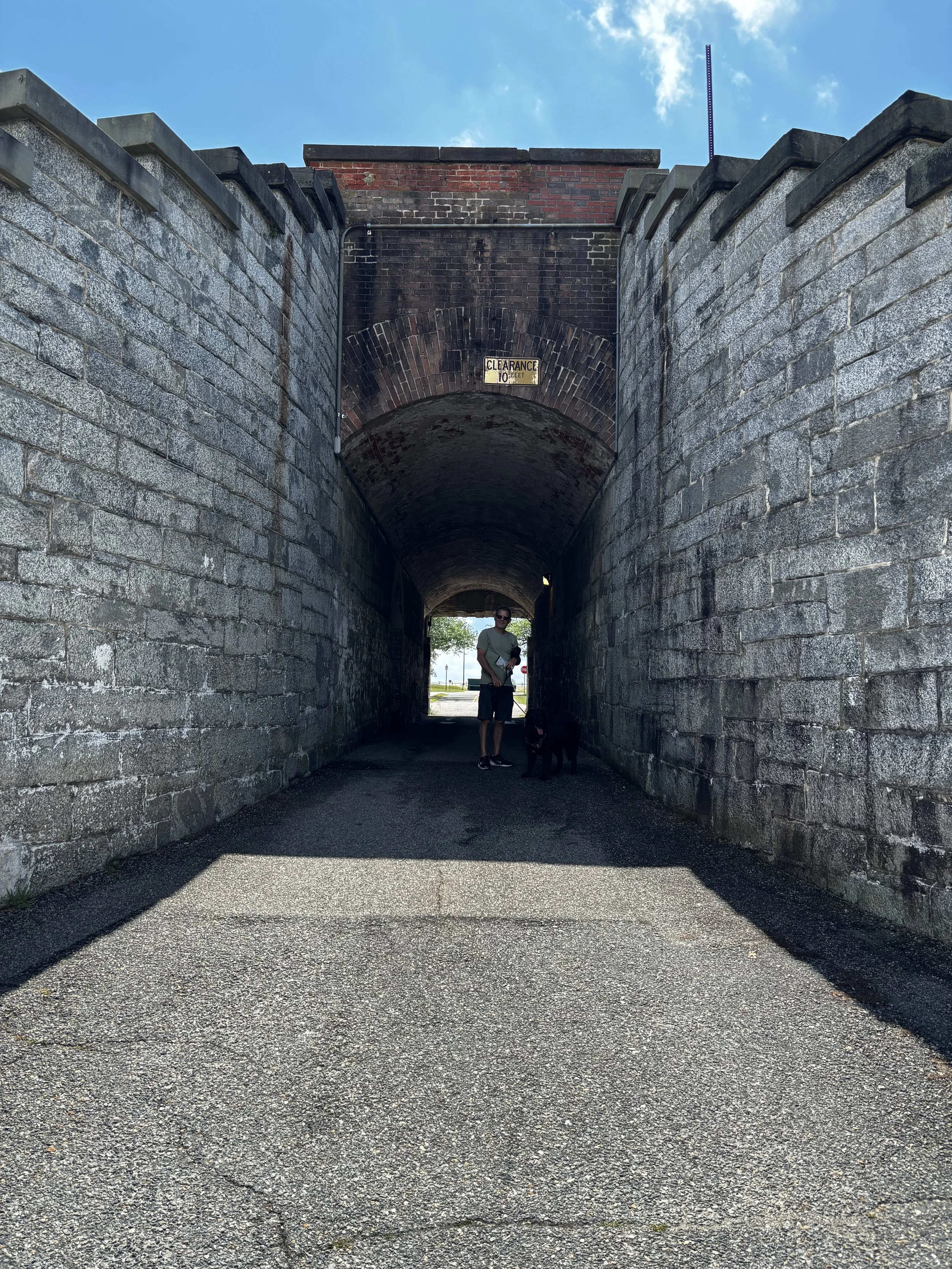America’s Historic Triangle
Williamsburg, Jamestown, Yorktown
We spent nearly a week in “America’s Historic Triangle” (Williamsburg, Jamestown, Yorktown) where we were deeply immersed in our nation’s history.
A 5-month journey across the Atlantic on this? I think NOT!!
Jamestown
Jamestown holds the honor of being the first permanent English settlement in America, beating even the Pilgrims by nearly 15 years (but, hey, the Pilgrims still get to claim Thanksgiving). We visited the actual site of that original settlement where we saw hundreds of artifacts discovered through ongoing archaeological digs, and walked through re-creations of some of the original buildings in their original locations. We learned a lot about the true history of the place. Spoiler: Pocahontas did not fall in love with and marry John Smith. (Shame on you Disney!). Right next door to the actual site, there is a Jamestown living history museum. It consisted of re-creations of key buildings, the fort, and Indian village, and the ships that brought the settlers over. While the first was impactful because you got to be there where it actually happened and see the things the people actually used, the second was impactful in that it “brought it all to life”. Walking on the replica ships and imagining 5 months at sea really drove home the idea that we wouldn’t have survived a week in 1607!
Williamsburg
Williamsburg is about 9 miles up the road from Jamestown. It was founded almost 100 years later in 1699. As the Virginia colony grew and expanded, Williamsburg replaced Jamestown as the Virginia capitol. Today, Colonial Williamsburg has nearly 100 18th century buildings (both originals and reconstructions) and numerous working “businesses” (think, blacksmith, tailor, cooper, joiners, etc.) that showcase life in the early 1700’s. While Williamsburg was quite interesting we definitely could have done without all the rain (which seems to be following us wherever we go)! We did go back the next day to get a better feel for the town on a day without rain. We also ventured back to go to the farmer’s market. This was held on the main street of the historic section of town and featured about two dozen vendors. The produce was amazing! They had about everything you could imagine and it was clear their growing season starts earlier than ours does in Kansas City. We picked up some fruit and homemade sourdough bread which were a nice addition to a charcuterie lunch we had a few days later.
Yorktown
Yorktown was the site of the final major battle in the American revolution. It was here that George Washington and the Continental Army, aided by the French Army and Navy, trapped the British and captured nearly 1/3 of all British forces in the colonies at that time. This effectively ended the war and gave America its independence. As with Jamestown, we visited the American Revolution Museum and then toured the actual battleground. This proved again to be a powerful combination for making history come alive.
Battlefield
Cannons
Richmond
Family
While we were in the area, we got to have dinner with several of Christina’s relatives who live in Richmond, VA. It was nice catching up with them as it has been several years since we all saw each other.
While in Richmond we took some time to visit the downtown area. We ventured over to the Edgar Allan Poe Museum. This is the oldest residential building in Virginia. It dates to 1737 and has the perfect vibe for Edgar’s exhibit. Edgar never lived in the house; but it serves to commemorate his time living in Richmond which he considered his home. He attended the University of Virgina in1826 but had to drop out as his adopted father refused to pay for classes. Poe had a hard childhood. He lost his mother at the age of two and was never accepted by the family who took him in. It is said that he drew inspiration for his writings from his childhood. If you have ever read Poe, you get a sense for how he viewed his childhood. (Eek!) After leaving the museum, we went to explore the Hollywood Garden Cemetery which is the resting place for two U.S. presidents, James Monroe and John Tyler, and one CSA president, Jefferson Davis. It is also the final resting place for 18,000 confederate soldiers.
Fort Monroe
A color illustration of Fort Monroe in 1861. Library of Congress
Fort Monroe is a national monument packed full of over 400 years of history. We won’t bore you with all the details but here is your cliff notes version. The former military instillation was built in 1823 to guard the navigation channel between the Chesapeake Bay and Hampton Roads. As many of you know, Virginia became part of the Confederate States of America, but Fort Monroe remained in Union hands throughout the American Civil War (1861–1865). The fort was notable as a historic and symbolic site of early freedom. Thousands of former slaves found refuge under the provisions of contraband policies during the civil war. Ironically, it was the same place the first slaves were brought to America.
As you enter Fort Monroe, you are greeted with a prominent structure at the main gate. Once you pass through the gate, the sheer size (565 acres) of the fort is quite impressive. Today it operates as a public park complete with homes and apartments available to rent, even by civilians. They have a church that was built in 1857 that remains open today for services. Building No.1 (as it is known) was built in 1819 and is where President Abraham Lincoln stayed and planned the Union attack on Norfolk, Virgina. Now, that is pretty cool! We spent a few hours wandering the property. Christina started off with a coffee at Firehouse Coffee 1881, which, as you may have guessed, was built in 1881 as a firehouse for the US Army. After walking around, visiting the pet cemetery, light house and visitors center, Mack let us know it was time for a break. The fort has over 3 miles of beach front that Mack definitely wanted to check out. The minute we hit the sand, he took off and leapt into the ocean for a quick dip. After that, Mack and Christina convinced John that we had enough history for the day, and it was time for some retail therapy.




